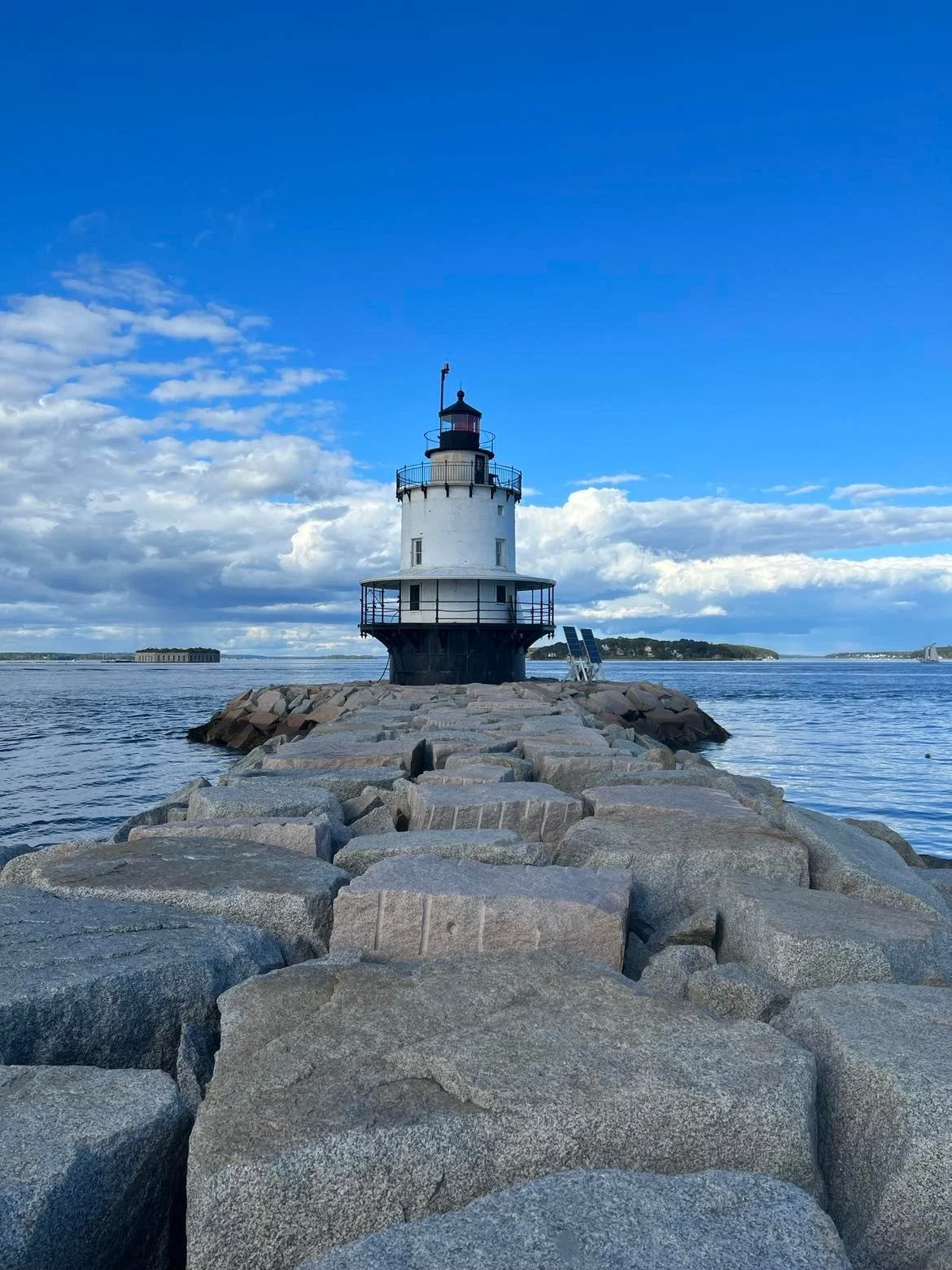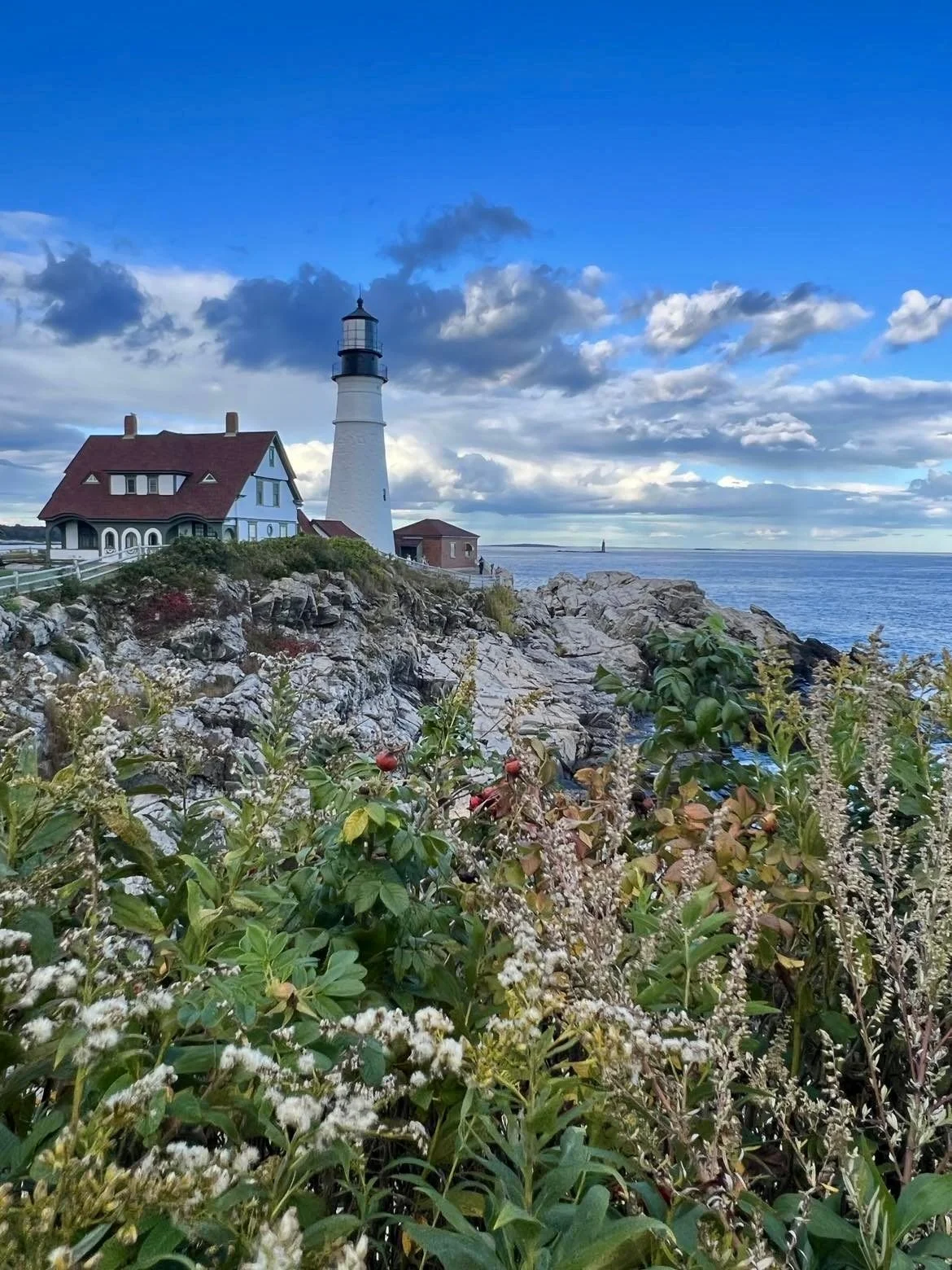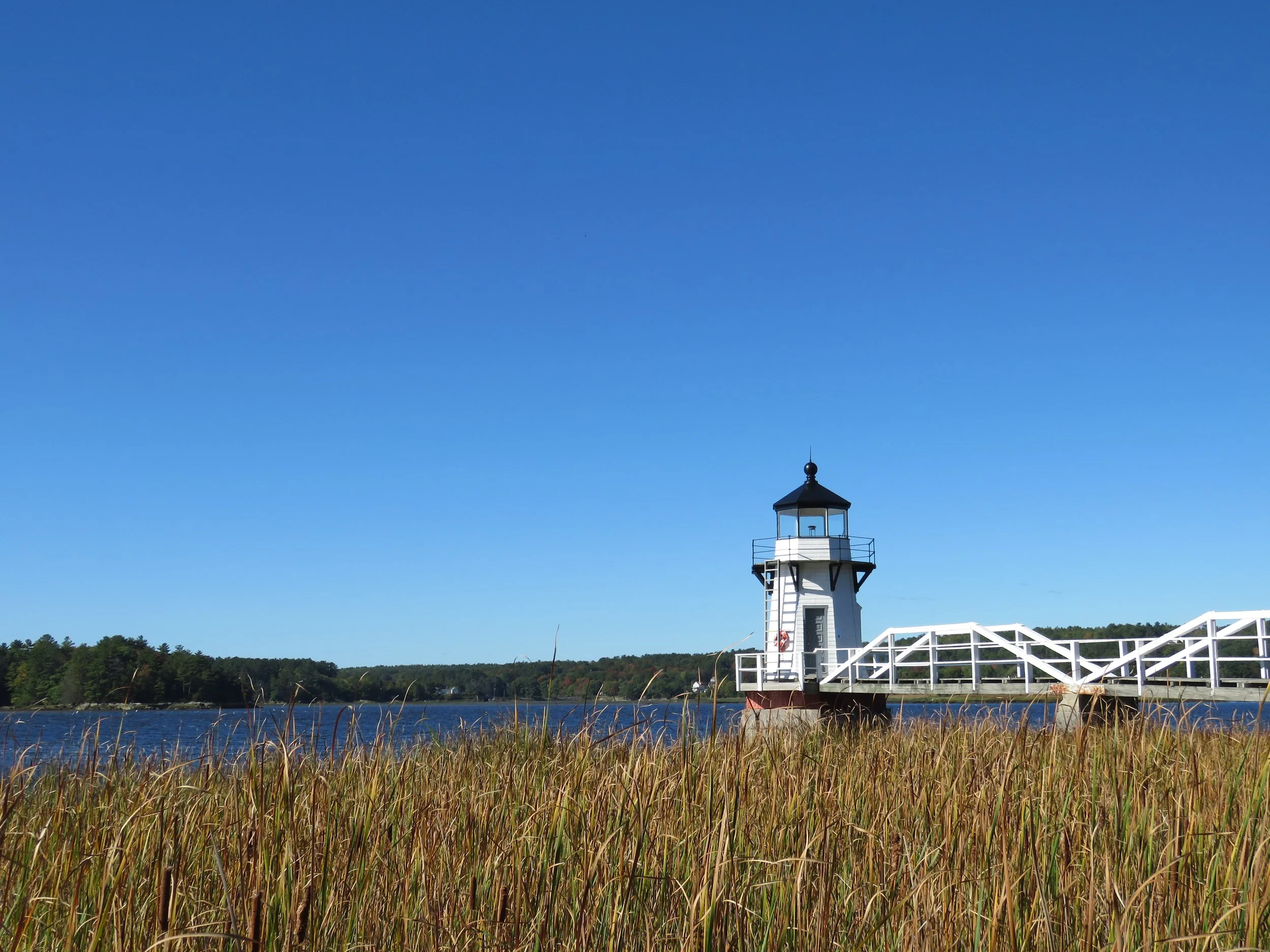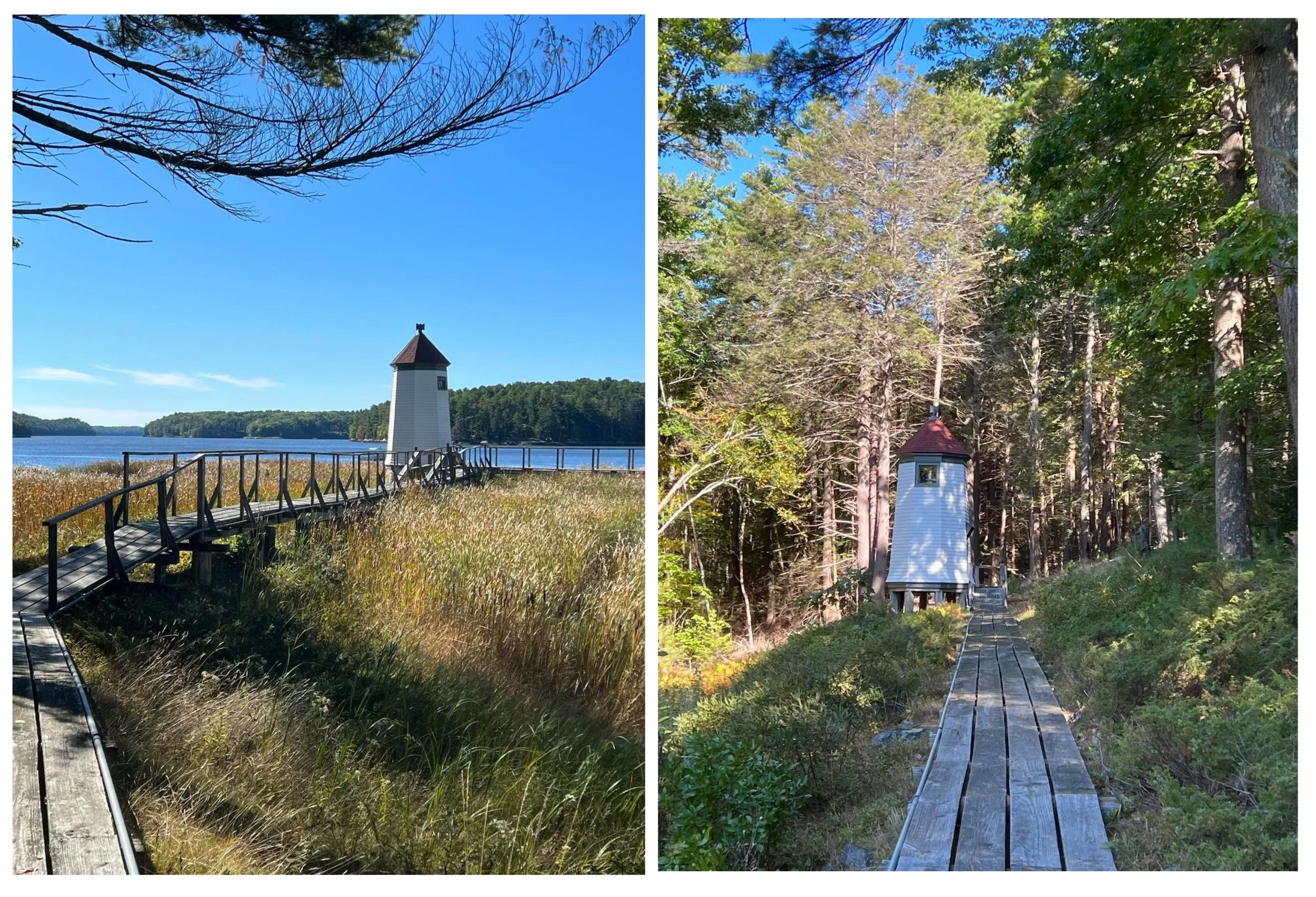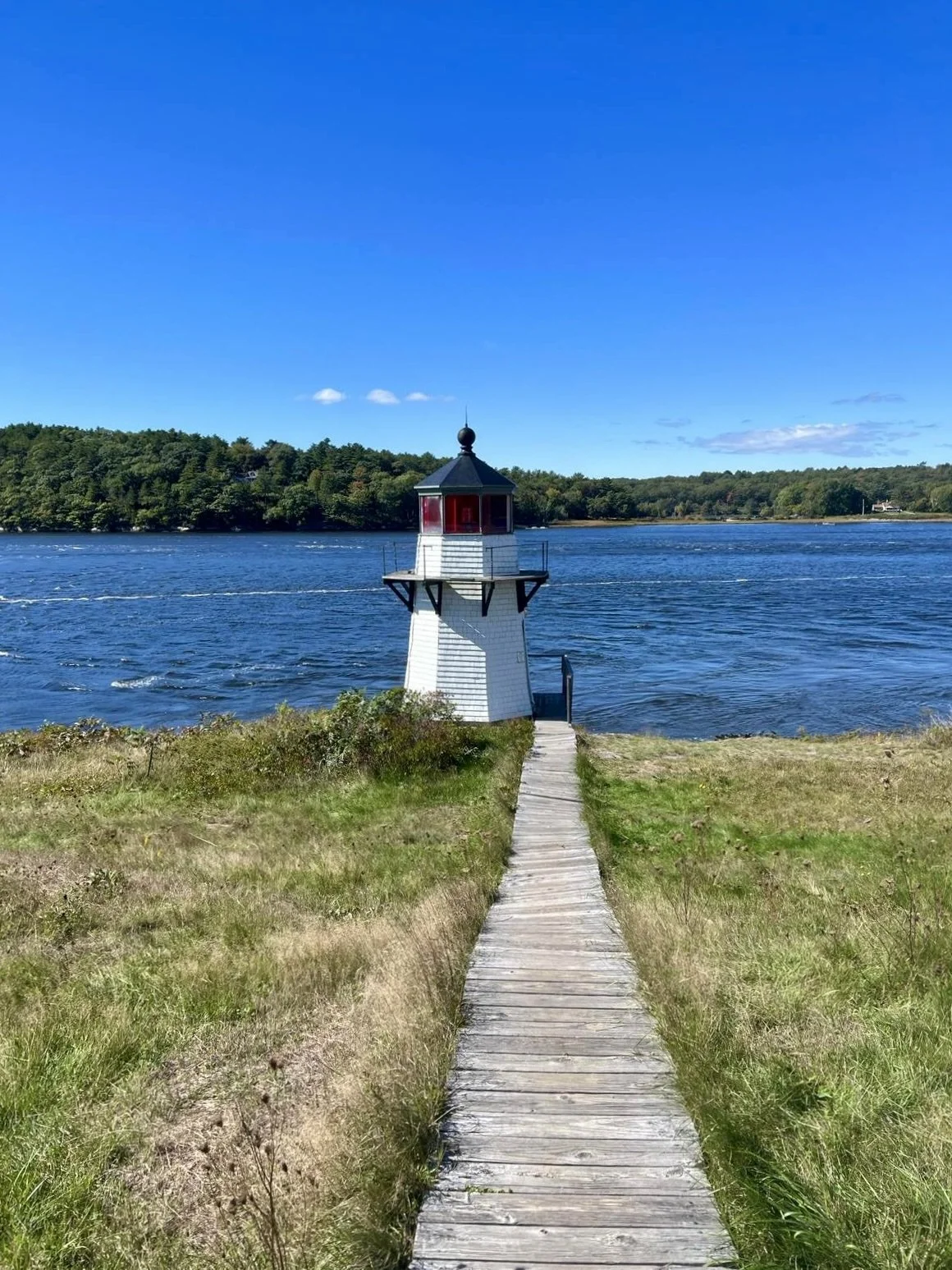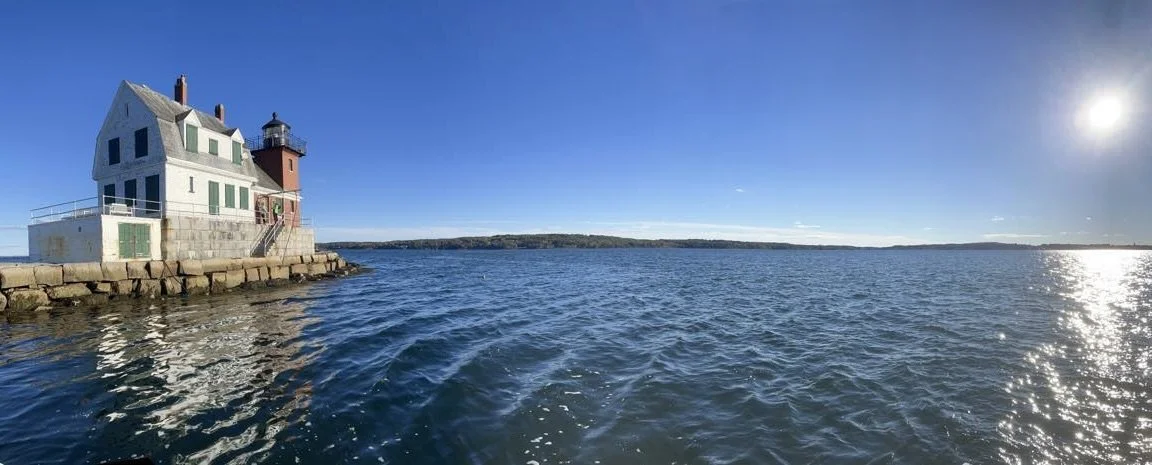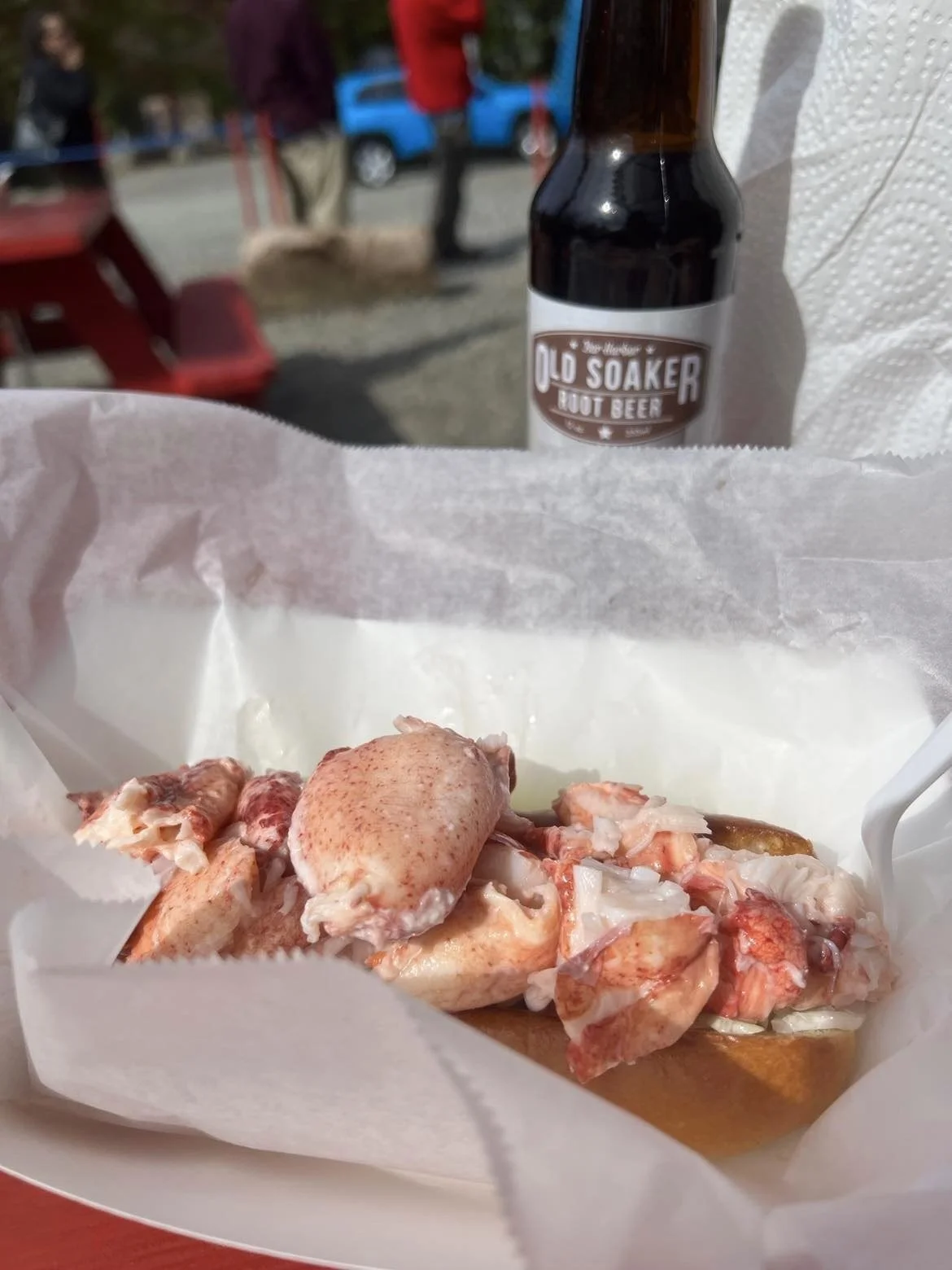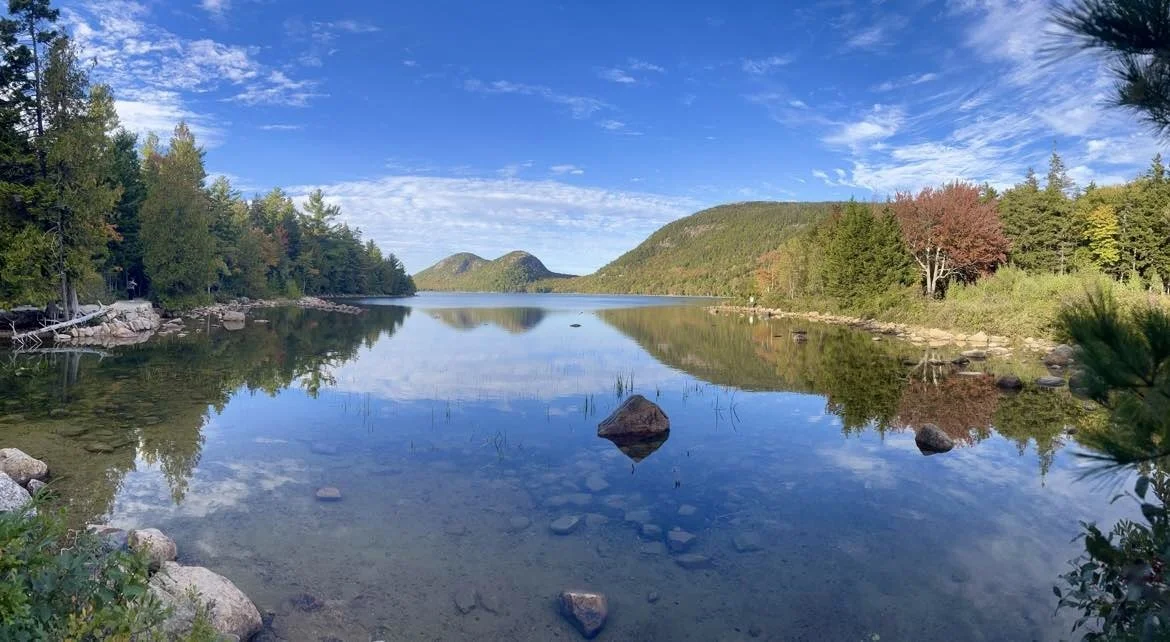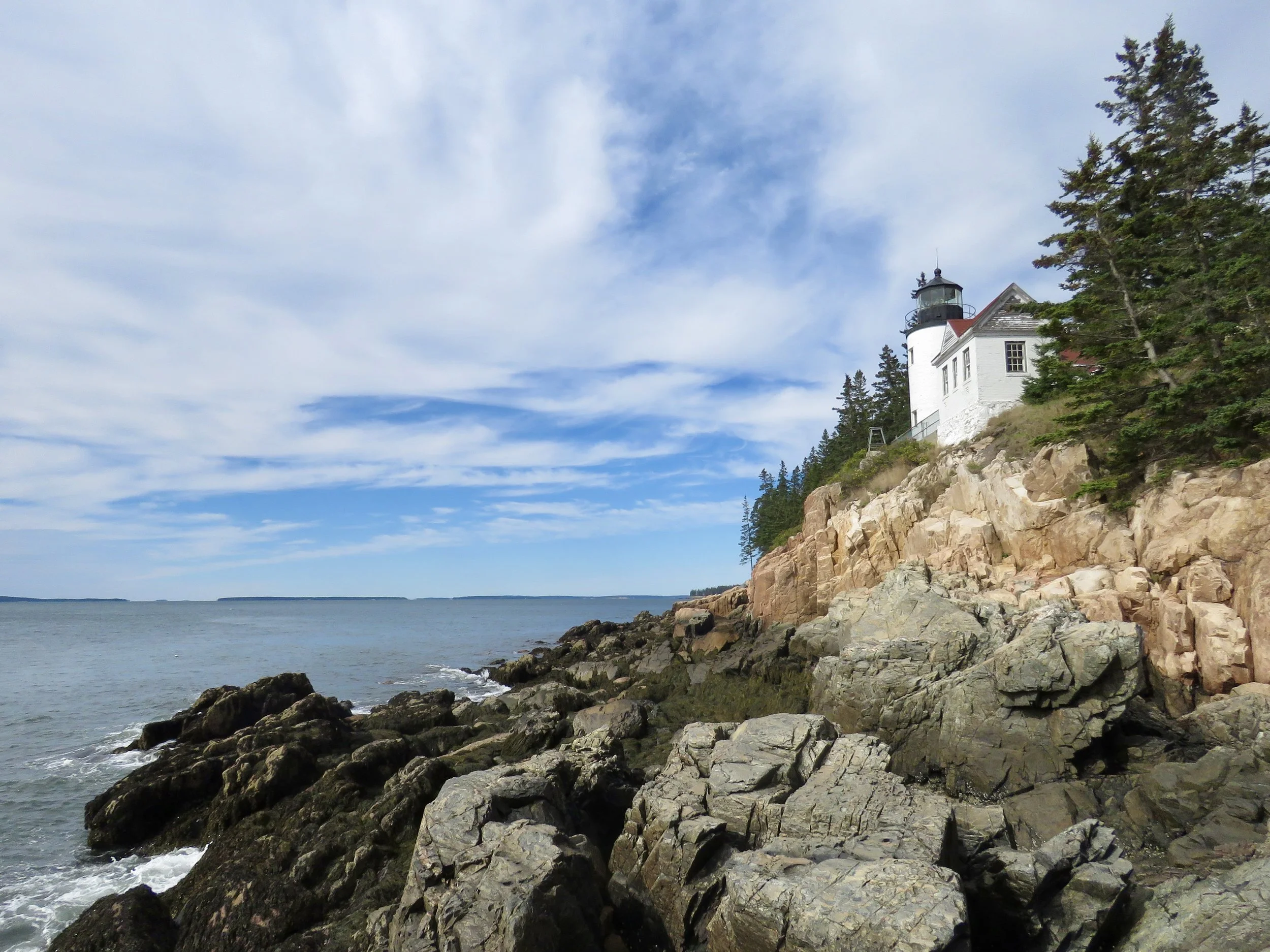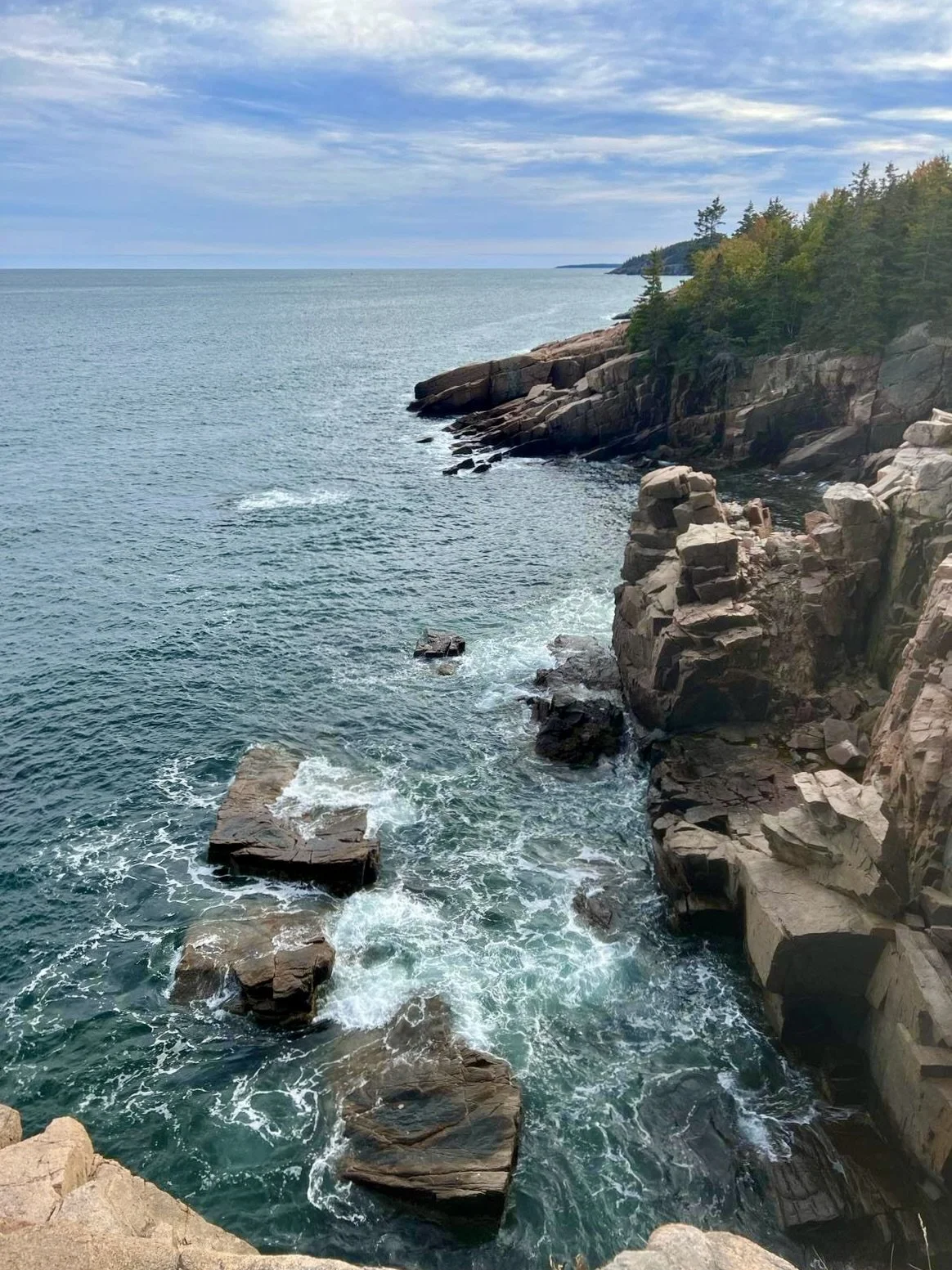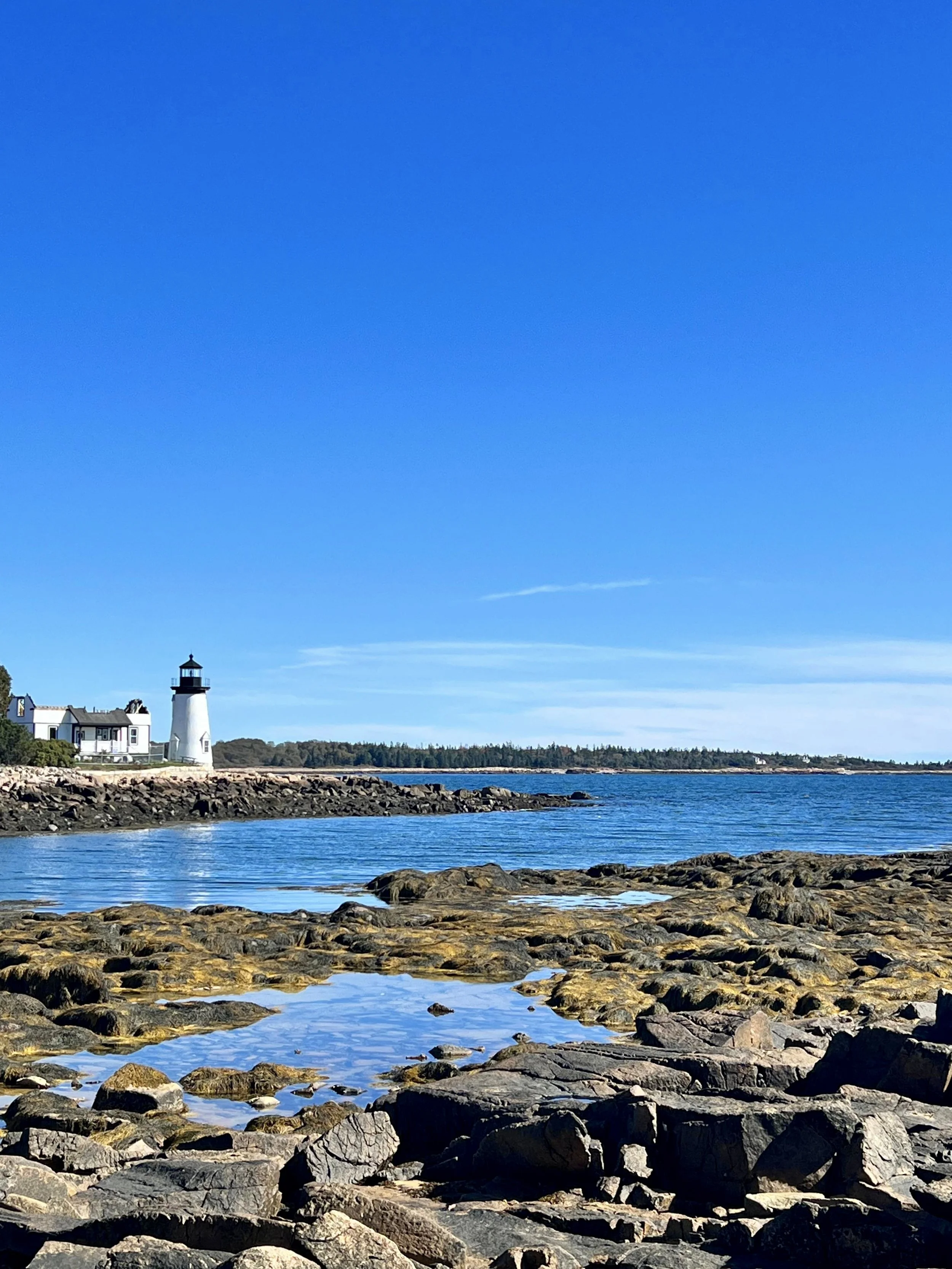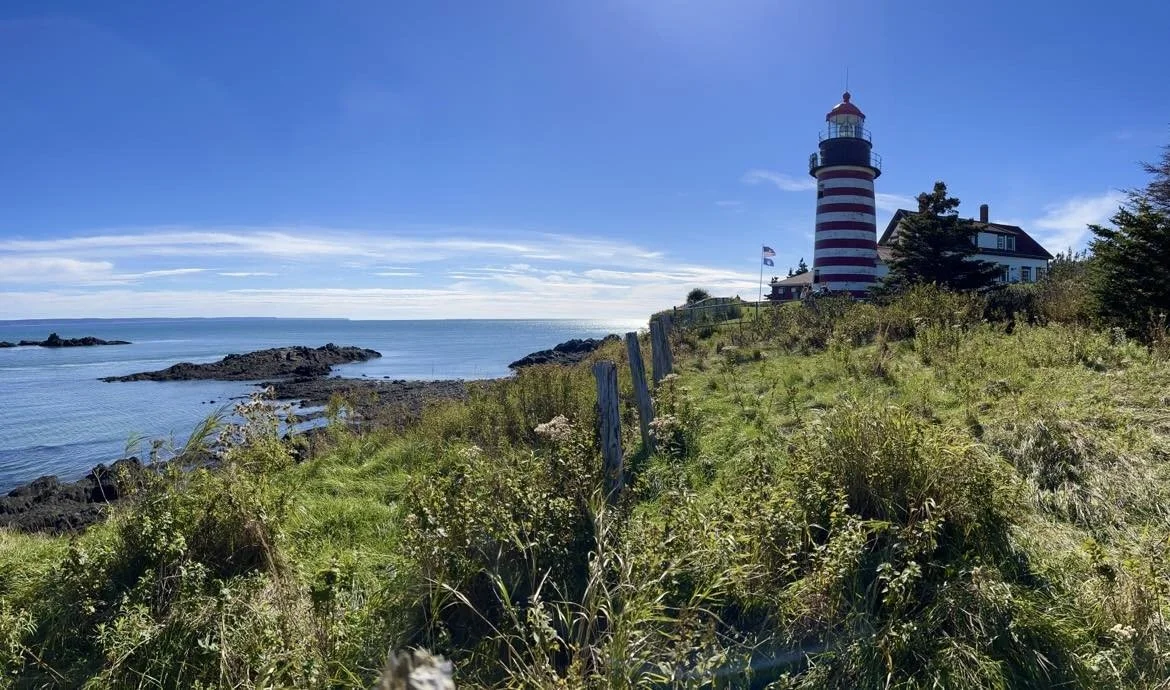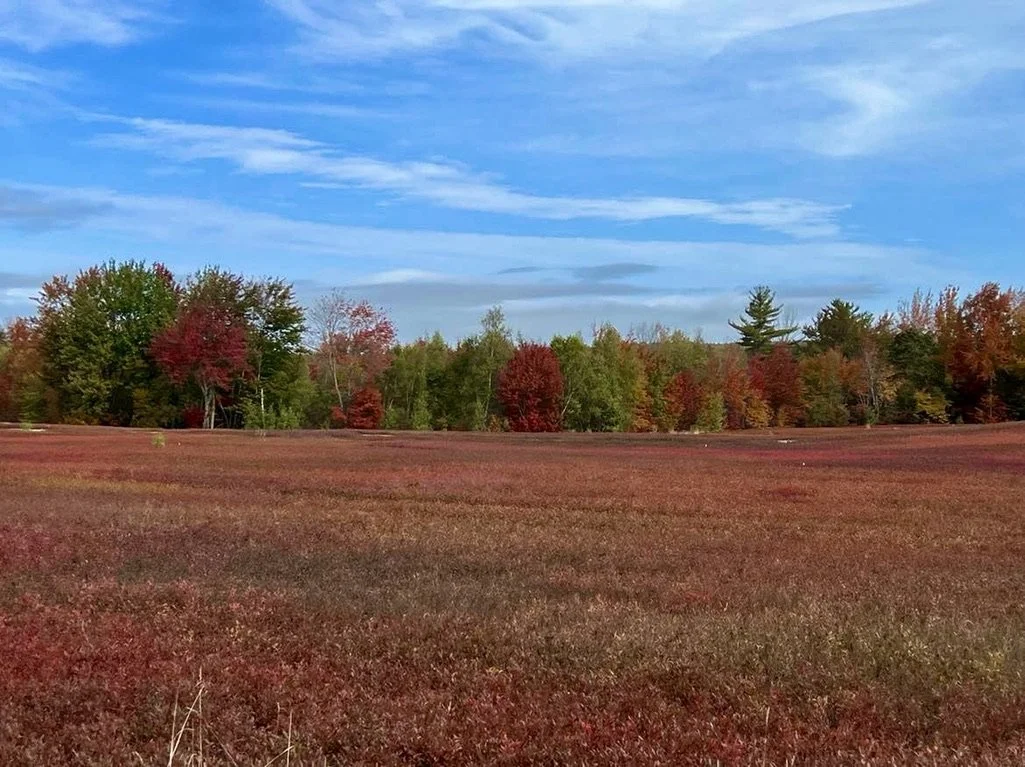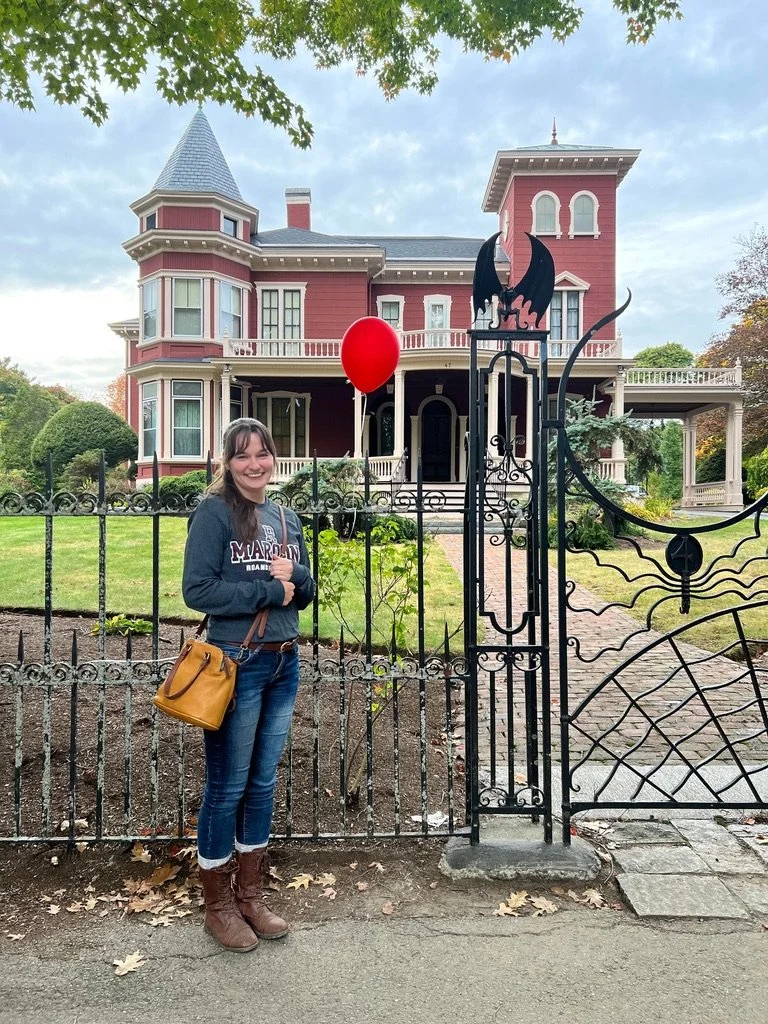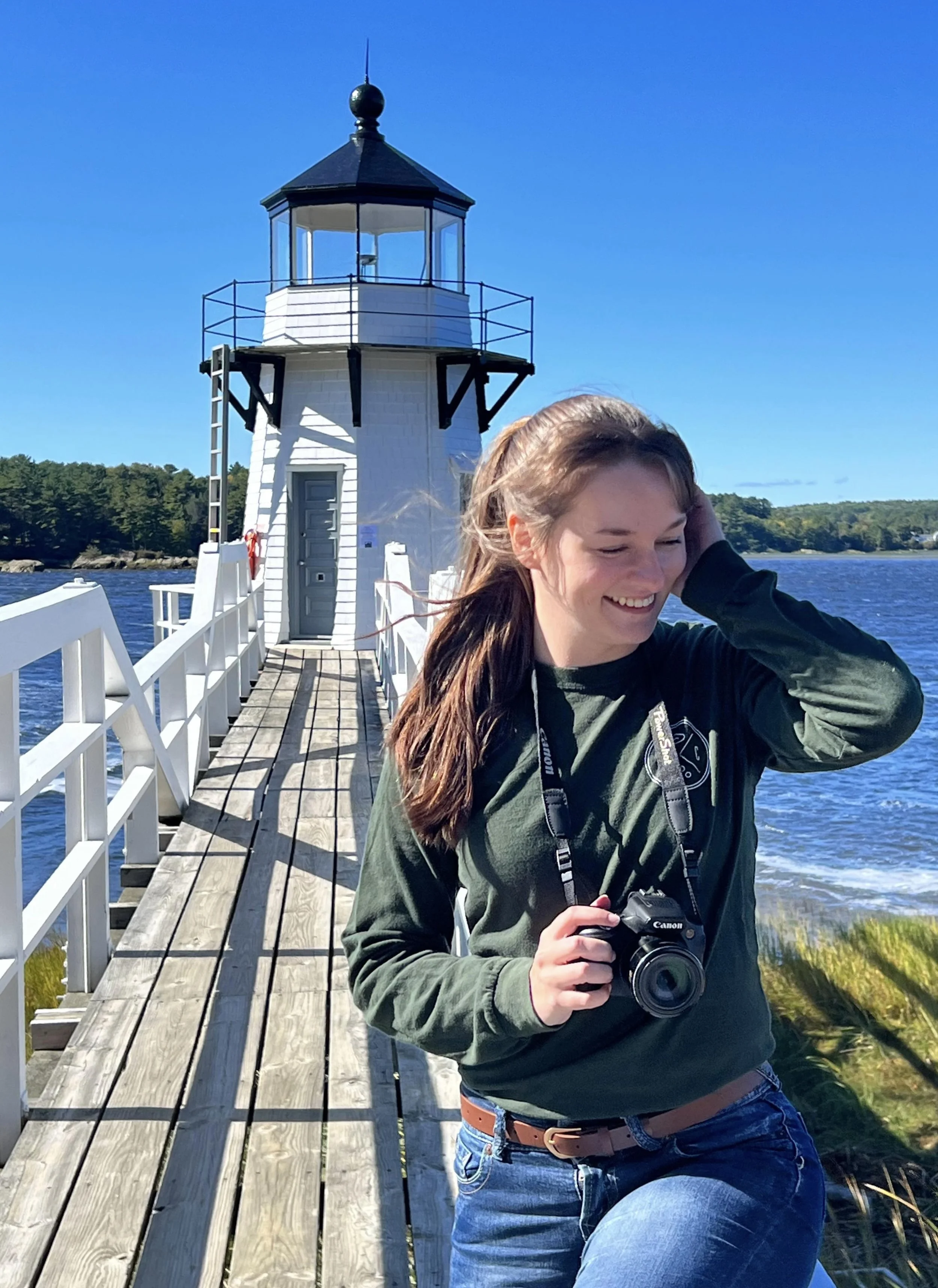Autumn in Maine
Welcome to my first blog!
I thought it only appropriate that my first blog be about a recent adventure. I trust many of you that follow my Instagram account are aware that I took a trip to the state of Maine at the end of September. I used the trip as an art research experience, and focused heavily on the lighthouses which dot the coastline. I’ve included a shortened version of my itinerary in case anyone is interested in following it one day. I definitely recommend planning your trip around peak fall foliage season, because the colors in Maine are astounding, but I’m sure Maine is gorgeous year-round. I wouldn’t mind going back in the Winter one day to see everything covered in snow.
DAY 1 - PORTLAND
Spring Point Ledge Lighthouse
Having had reasonably good flights, we arrived in Portland mid-day and immediately began adventuring. Our first stop on the itinerary was Portland’s famous Spring Point Ledge Lighthouse, also affectionately known as the “Bug Light,” due to its caisson-style structure. We had the lighthouse mostly to ourselves, and enjoyed skipping from rock to rock stopping regularly to take pictures from different angles. I’d definitely recommend watching your footing along this breakwater. There were several larger gaps where I had to jump across, and some rocks were a bit slick with water. Otherwise, it made for a wonderful first lighthouse spotting.
History
Spring Point Lighthouse was built in 1897 and is the only caisson lighthouse within the US to be accessible by land, connected by a 950ft breakwater. A caisson style lighthouse is one whose superstructure is made of either concrete or metal with the living quarters often being made of cast iron. The structures of the lighthouses often give them the nickname “sparkplug,” or “bug light.”
Signal: Flashing white 6sec with two red sectors.
Portland Head Lighthouse
Only a few miles down the road, we arrived at our second lighthouse of the day, the piece de resistance of Portland, the Portland Head Light. It’s difficult to describe the Portland Head Light without being too cliche, because it really is as breathtaking as the pictures make it seem. Admittedly, it was quite crowded with tourists, but still less so since we arrived mid-day, mid-week, mid-season. It was wonderfully windy right by the water, and when I managed to find a quiet moment to myself it was, in a word, special.
History
Portland Head Light was constructed in 1791 at the behest of George Washington and is Maine’s oldest lighthouse.
Signal: Flashing white 4sec lighted continuously
I think it’s important to mention that right from the get-go I realized how little I really know about lighthouses. That being said, I made a point to research each one in order to get a better understanding of the history surrounding each structure. One of the things I found most fascinating is that each lighthouse has a different light characteristic associated with it, which really makes sense when you consider the fact that ships and boats had to be able to differentiate between signals. I was always under the impression that all lighthouses simply blinked a white light every now and then to warn of nearby land. In reality, all lighthouses have different signals. So, I decided to include that information for fun, but mostly for myself because I though it was neat.
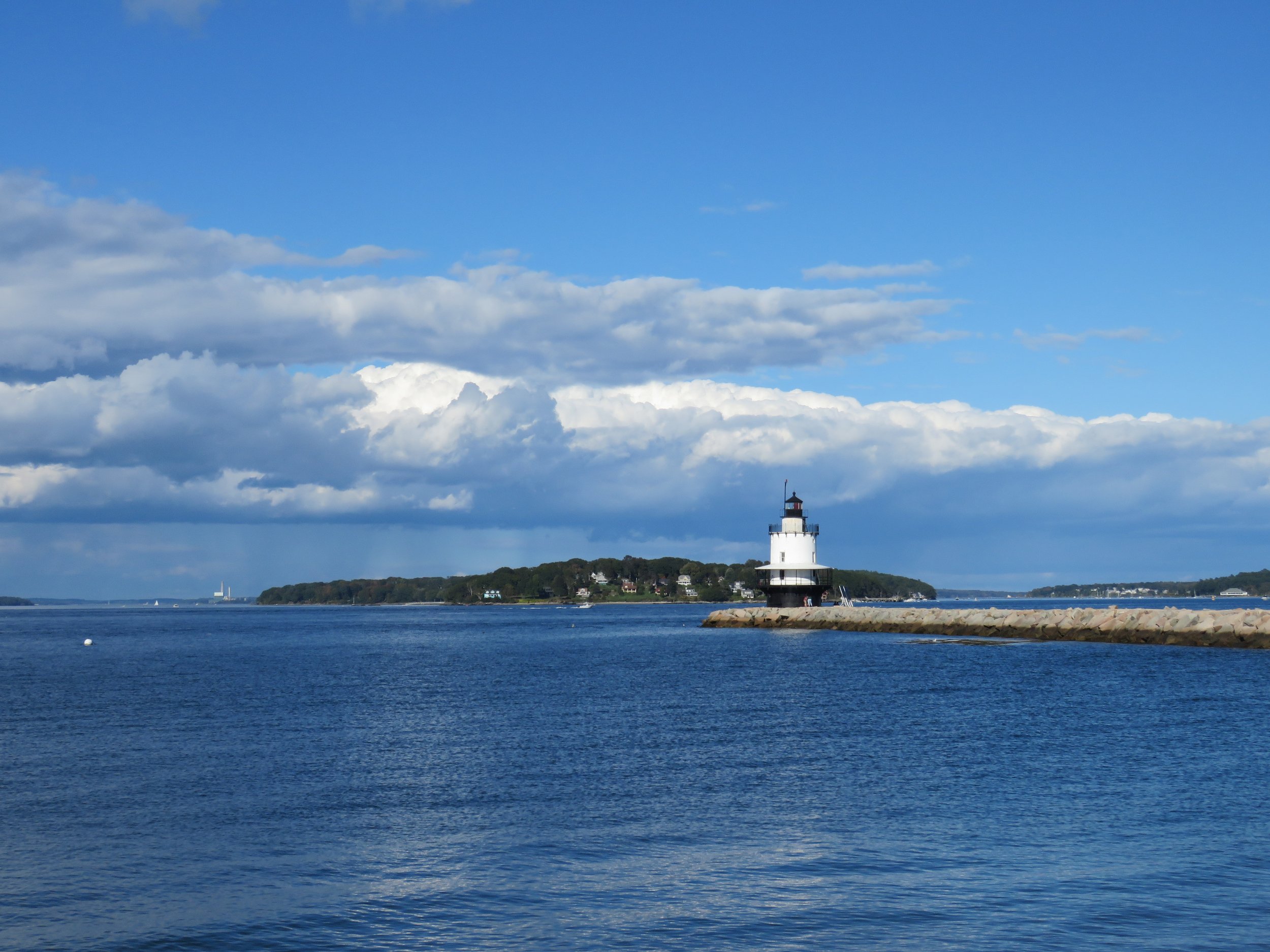
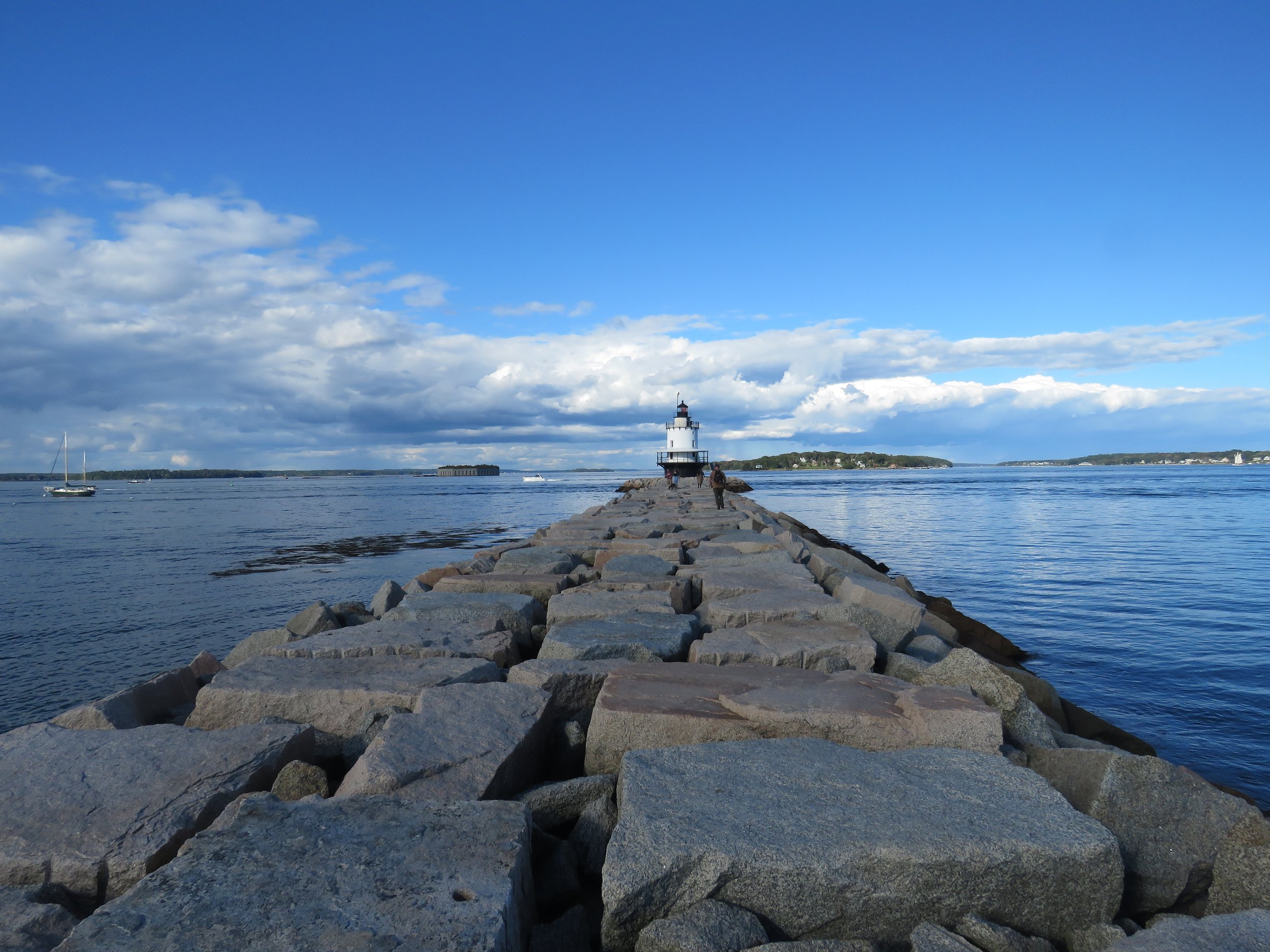
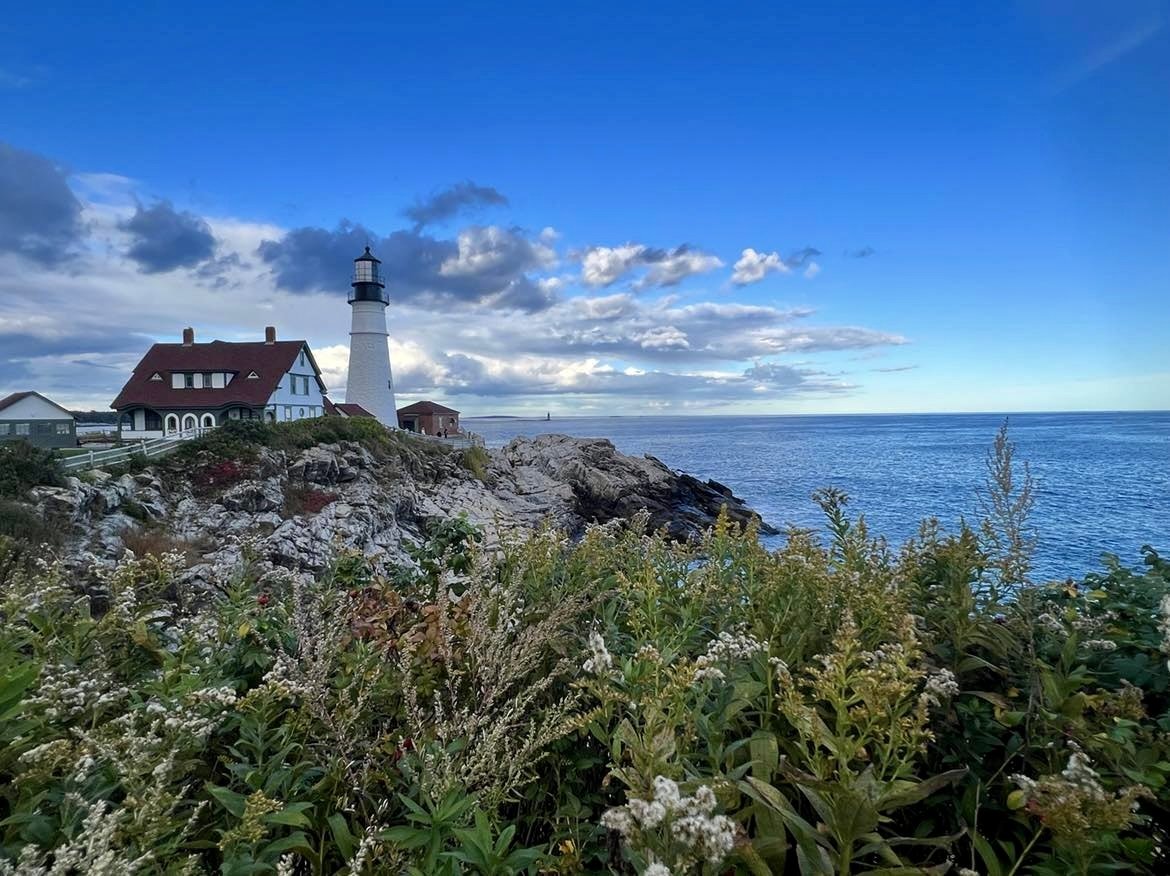

DAY 2 - ROCKLAND
Doubling Point Lighthouse
Day 2 was a big one with a total of six lighthouses, most of them being Kennebec River Lighthouses. We woke up early, had breakfast and headed out. First on the agenda was Doubling Point Lighthouse, a magical little lighthouse that is definitely off the beaten path. I don’t think this is one most people know about, or care to go out of their way to visit. You have to drive through the woods, but it’s well worth it. We had the entire area to ourselves. We took time to sit amongst the cattails, below the lighthouse, listening to the wind rustling through the reeds. It was absolutely enchanting. Even though this seemed to be a lesser known lighthouse, it definitely stole my heart.
History
Doubling Point Light house was constructed in 1898 near the city of Bath which was a major shipbuilding port at the time. Around 1892 the United State Lighthouse Board decided that the river needed improved navigational markers which prompted the construction of the Doubling Point Light, the Kennebec River Range Lighthouses, and the Squirrel Point Lighthouse (see below). However, Doubling Point did not always sit in its current location. It was moved to its permanent spot in 1988, and remains an active navigational aid for the area.
Signal: Fixed white light 4sec
Doubling Point River Range Lighthouses
Just a short walk from Doubling Point, sit these two beauties. We almost missed them when we realized they sit on private property with “no trespassing” signs. However, a kind neighbor assured us that the owner has no problem with respectful visitors, so we made our way down the path and towards the water. These lighthouses were very small and brought to mind pictures of the Shire. Again, we had the entire area to ourselves, which made for a wonderfully peaceful experience. There are few things better than just sitting and listening to the sounds of water on a breezy day.
History
Built at the same time as the Doubling Point Light, the River Range Lights are the only surviving pair of River Range Lights in the state. The Lights are arranged so that they are in alignment with each other when seen from the main channel.
Signal: Quick white (left picture) Signal: Isophase white 6sec (right picture)
Squirrel Point Lighthouse
Squirrel Point was the last of the Kennebec River Lighthouses that we visited. Unbeknownst to us, there was a bit of a hike involved in getting to Squirrel Point, nothing major, but it was an extra 1.4mi that we hadn’t planned on walking. The hike was an easy Autumn stroll, well marked, and fun. We lost service about a minute into the walk, but we knew we were going the right way based on a little wooden sign attached to a tree that said “Squirrel,” which prompted a chuckle from both of us. I did enjoy this lighthouse, but I have to admit that the most notable thing that happened was that a noticed a harbor seal swimming by as I was photographing the lighthouse. I’ll include a picture of that in the scroll gallery below.
History
Squirrel Point was built at the same time as the other Kennebec River Lighthouses and is located on the Southwestern tip of Arrowsic Island.
Signal: Isophase red 6sec with white sector
Pemaquid Point Lighthouse
Next, we made our way to Pemaquid Point. This lighthouse turned out to be the most crowded during our journey, but still not terrible. Several photographers were scrambling for a good shot, which required getting up close and personal with crashing waves. The rocky ridge of this lighthouse made for an impressive photo, but I have to stress that it was a bit scary climbing along some of the bedrock as it was rather slippery and jagged in some area.
History
Pemaquid Point Lighthouse was built in 1827 by order of John Quincy Adams. However, the original lighthouse had to be replaced in 1835 due to the poor quality of the structure. The bedrock which descends from the lighthouse can be dated back 430 millions years, and is the most striking feature. Fun fact, the Pemaquid Point Lighthouse is featured on the Maine quarter in the 50 States Quarters Program issued by the U.S. Mint.
Signal: Flashing white 6sec
Rockland Breakwater Lighthouse
Our last lighthouse of the day was Rockland Breakwater. I hadn’t expected the breakwater for this one to be as long as it was, but it ended up being a fun 7/8 mile long walk to the lighthouse. This breakwater was much easier to traverse than the Spring Point Lighthouse breakwater. However I would still recommend watching your footing. You’re apt to ruin your ankle if you don’t watch where you’re stepping. Also, the sea chickens do not care that you’re there. They will land on you if they see fit. I had to dodge quite a few. I would also advise possibly bringing a light jacket. We were lucky enough to have beautiful days while we were lighthouse hunting, but there is a definite temperature drop when you’re almost a mile into the water.
History
The Rockland Breakwater was completed around 1899 in order to protect anchored ships at harbor from strong winds and storms. The lighthouse was built shortly after in 1902, and is now maintained by the Coast Guard.
Signal: Flashing white every 5sec
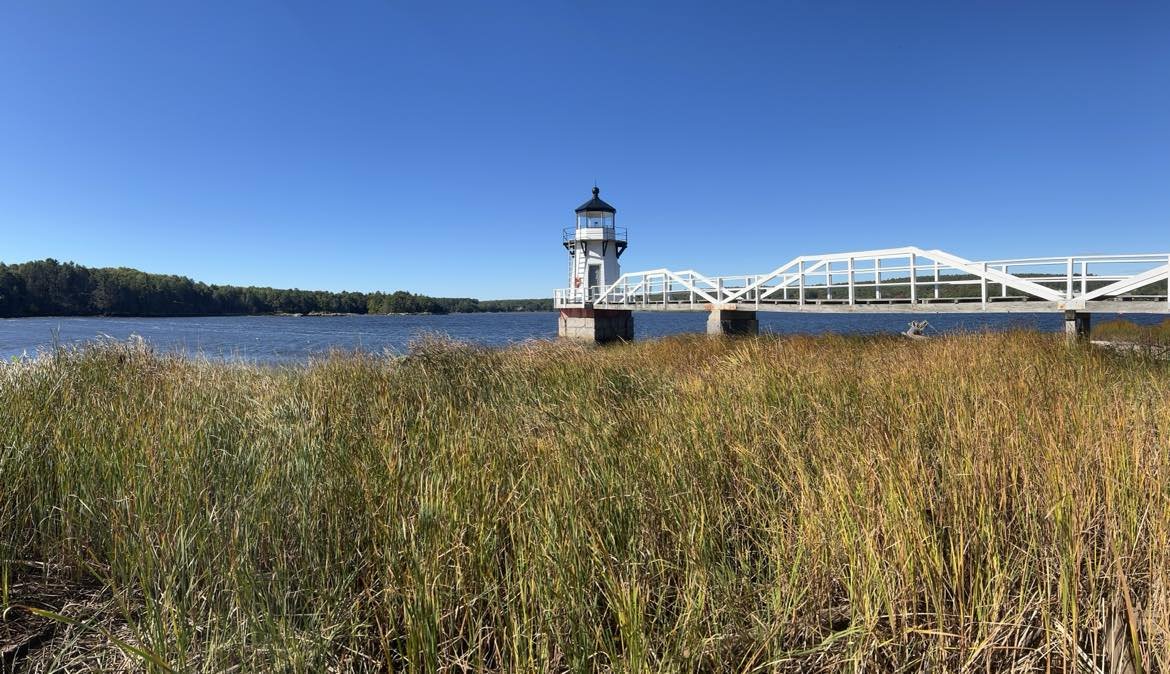

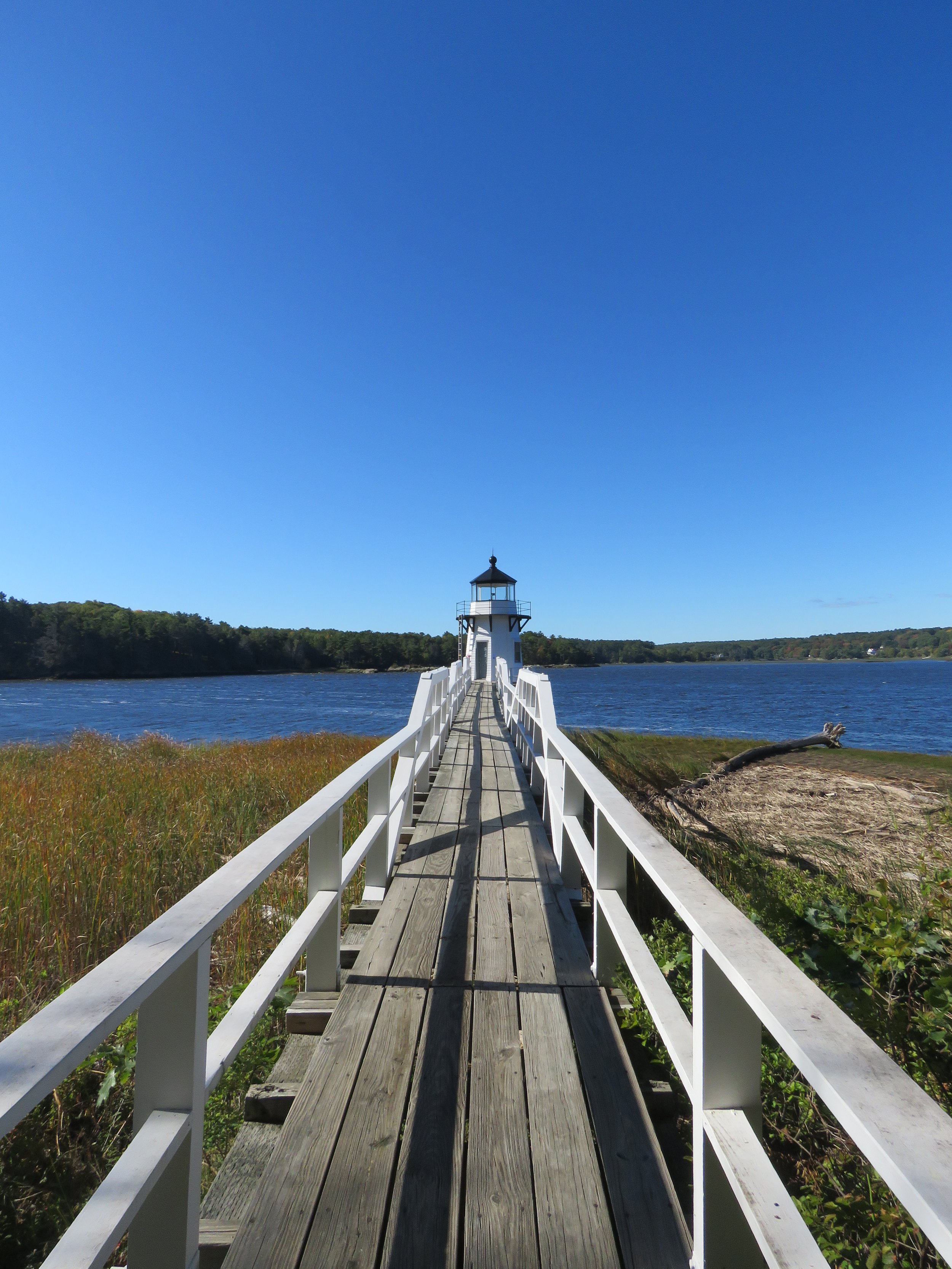
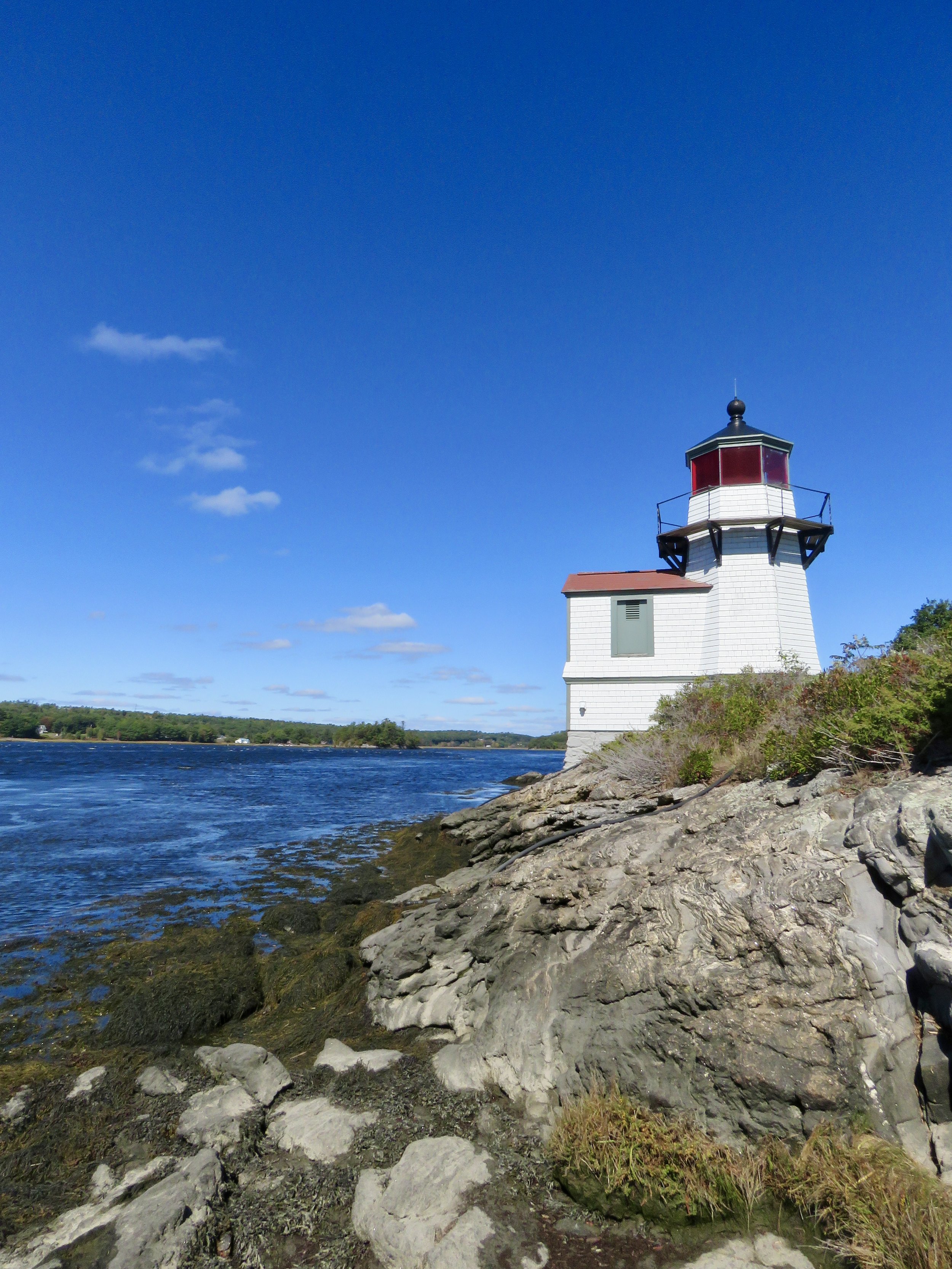
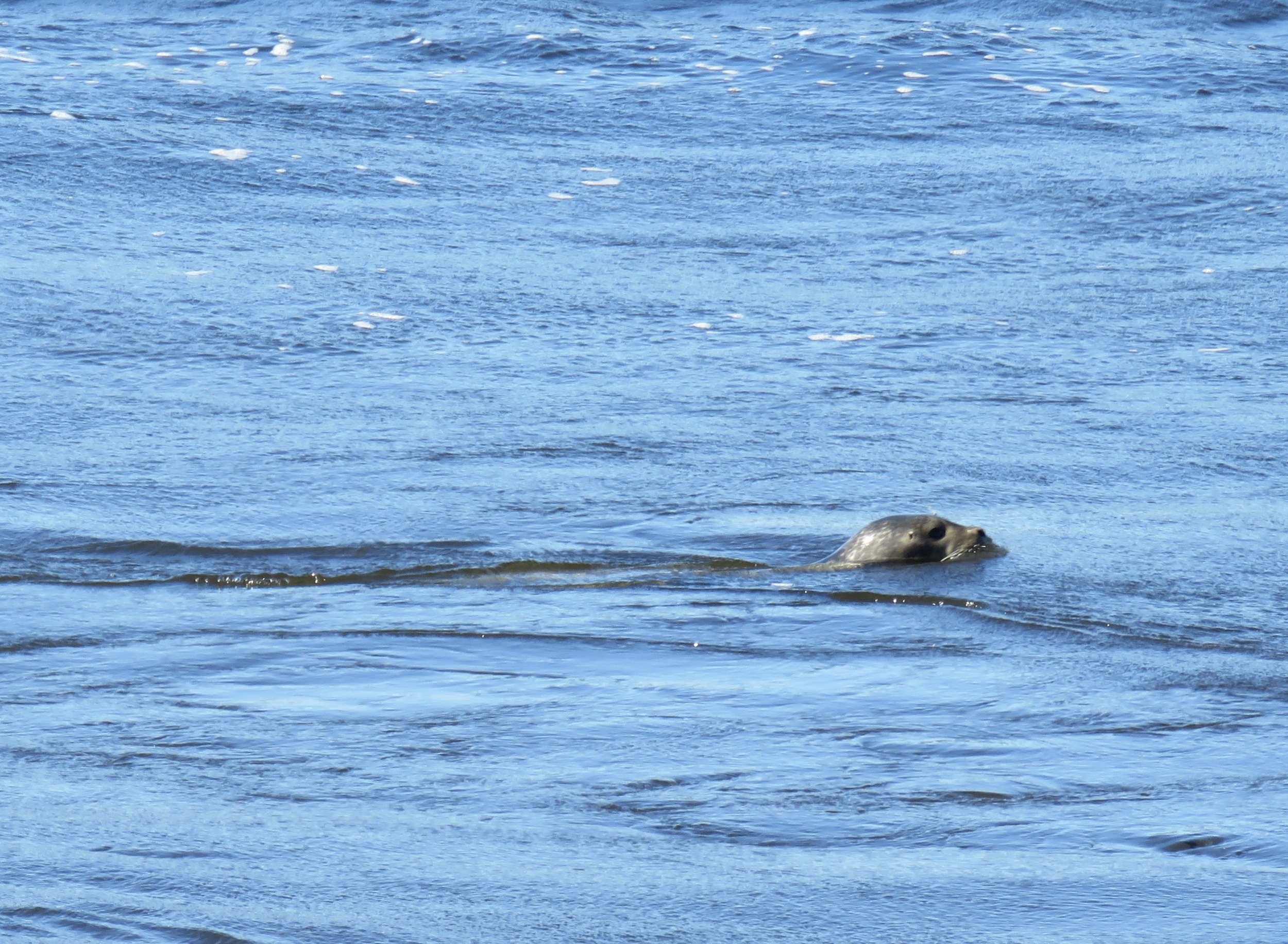

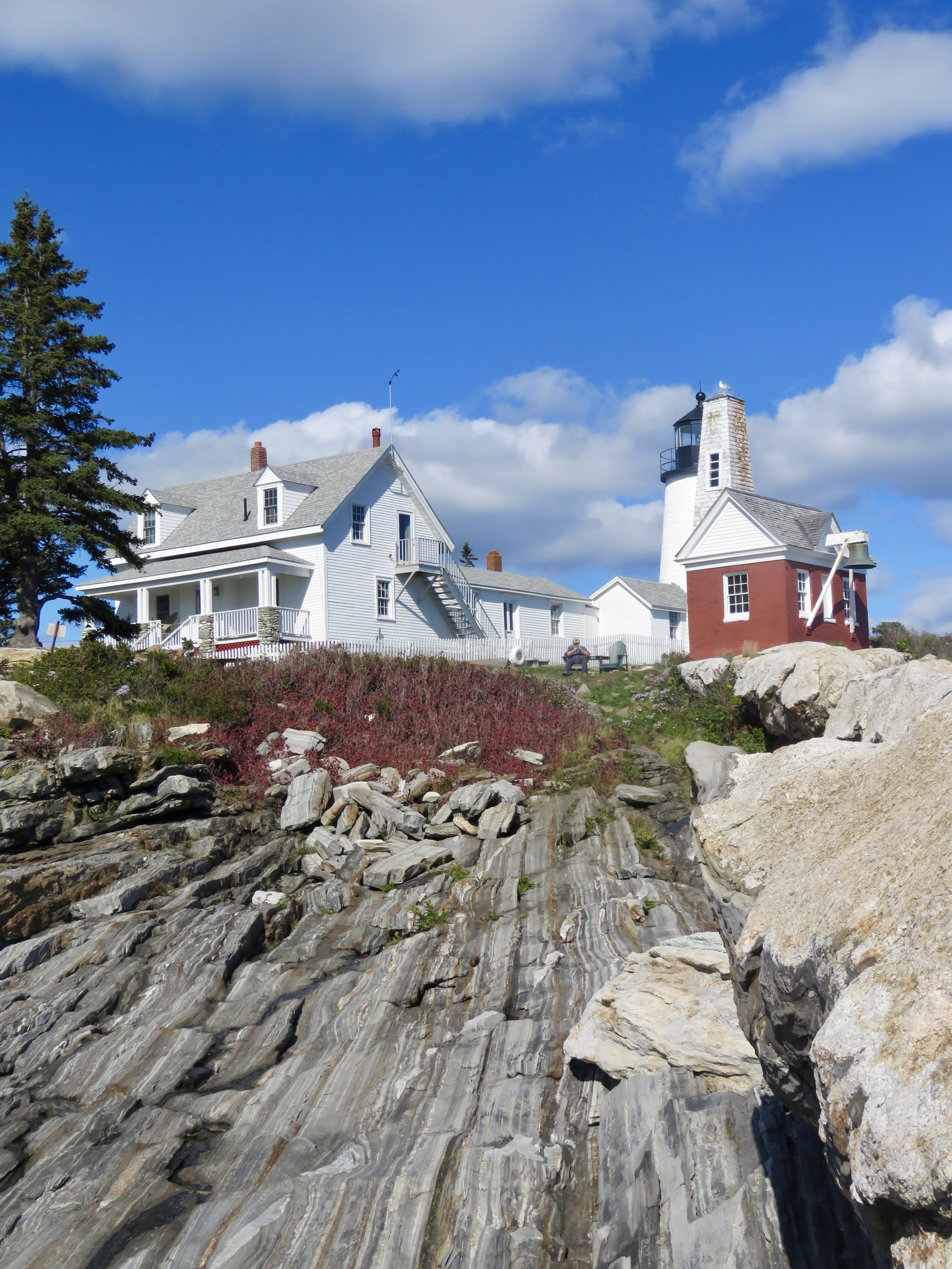
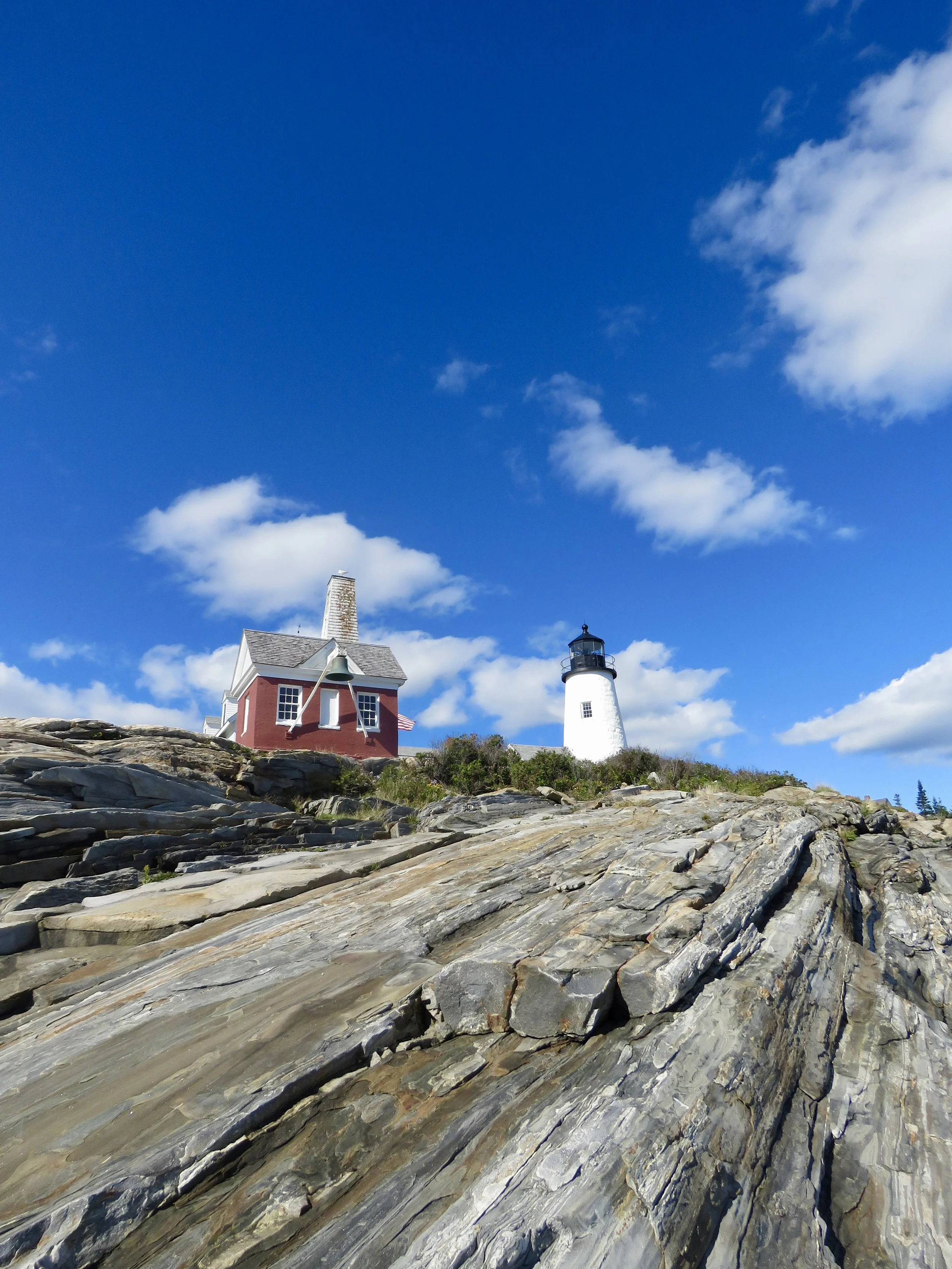
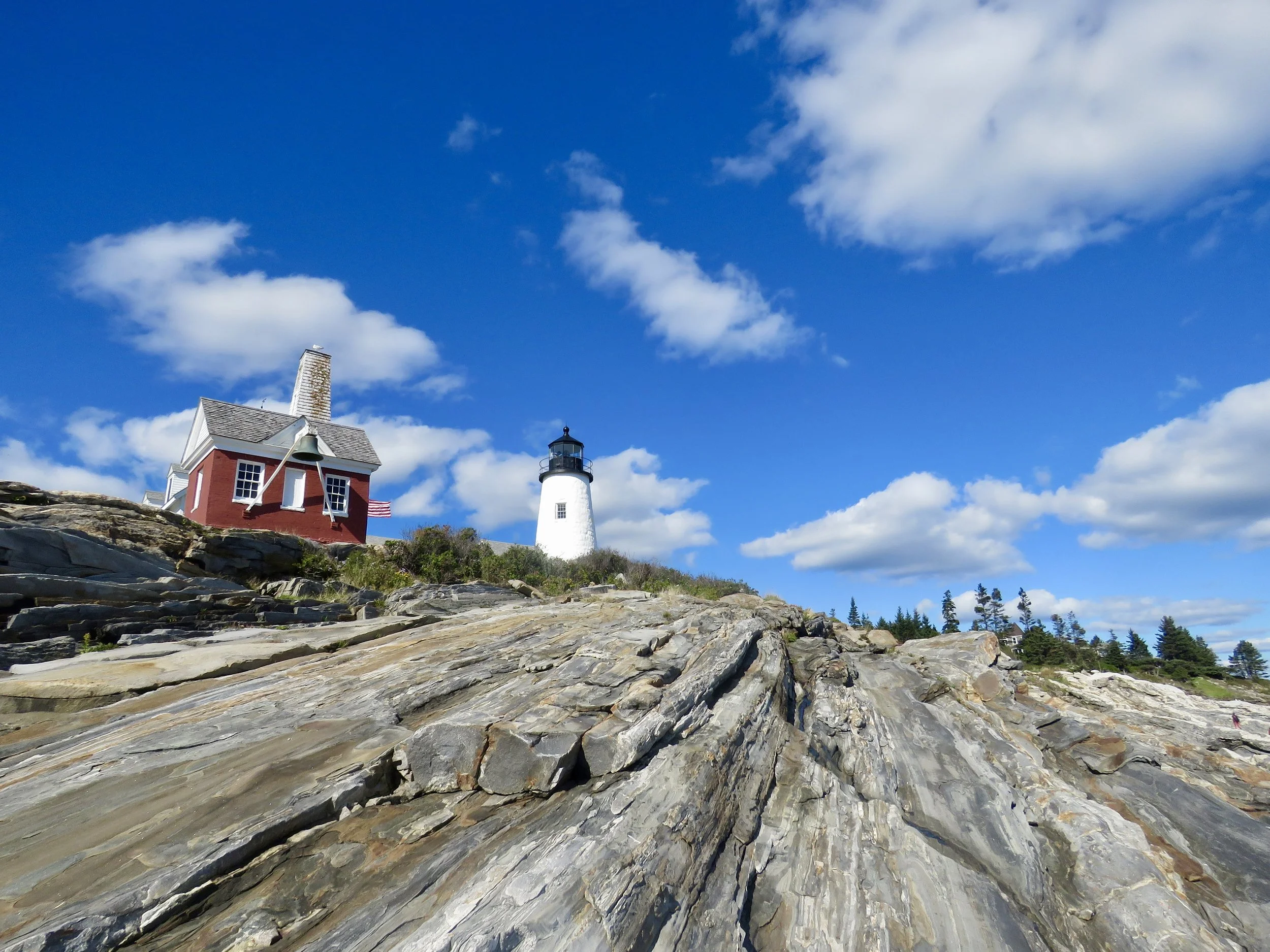
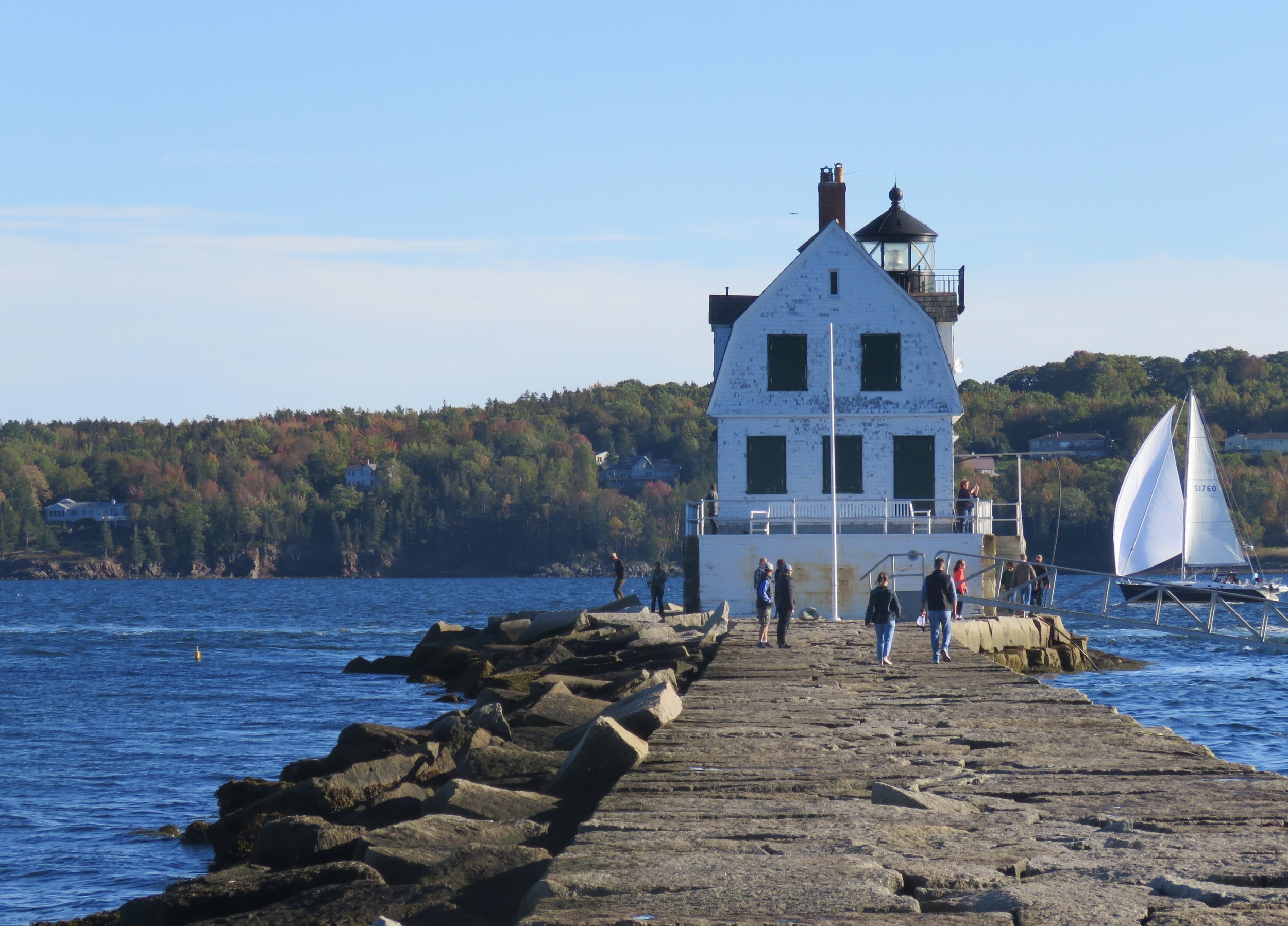
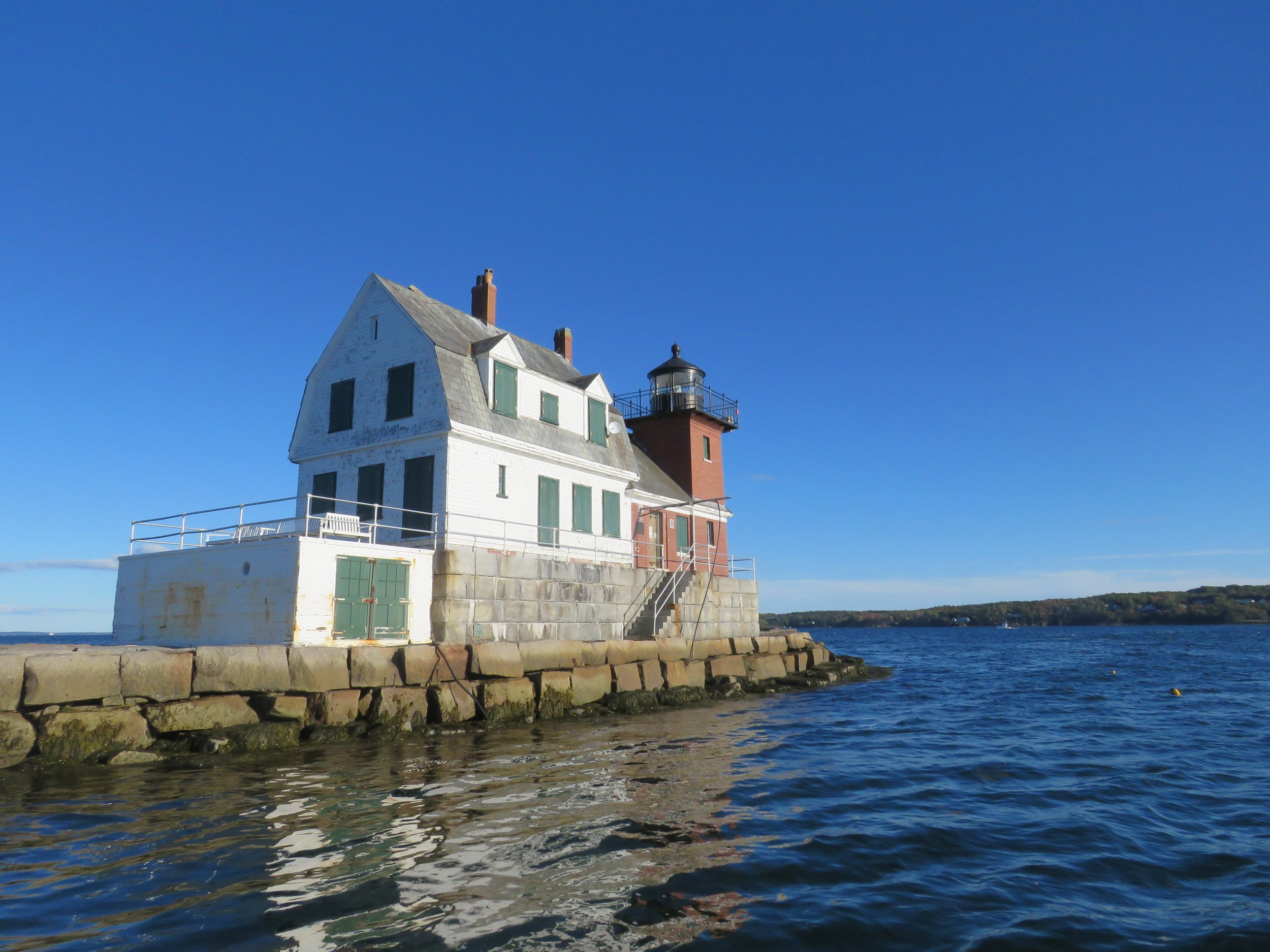
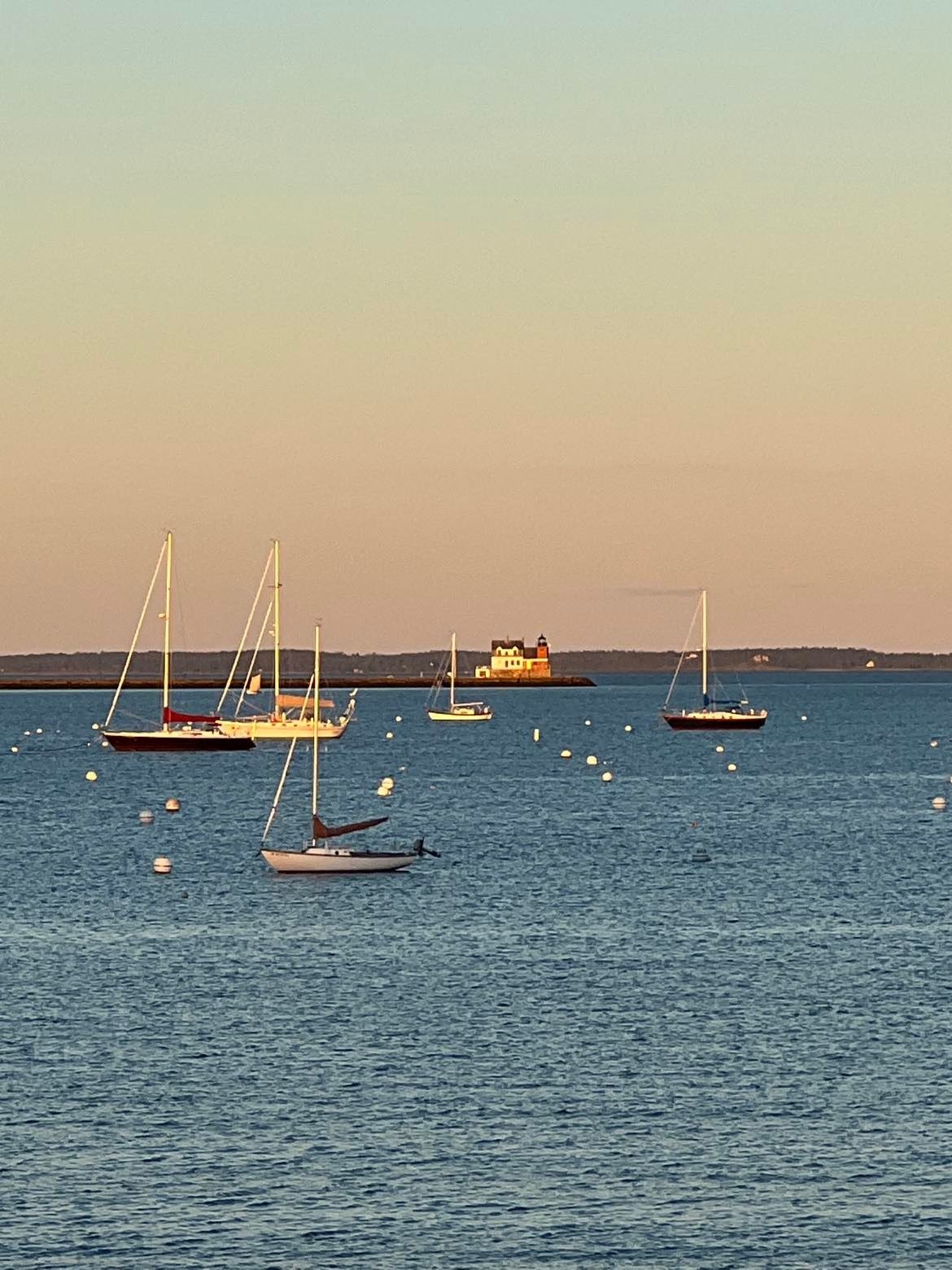
Days 3 - Bar harbor
Bar Harbor
The next three days were entirely dedicated to Bar Harbor, since I had a feeling it would be our favorite place. Not only is it right next to Acadia National Park, but it’s also where we splurged on food.
Our day started out with us stopping by the park visitor center to get our park passes. Afterwards, we had lunch at the Travelin’ Lobster. I haven’t talked about food yet in this post, but the lobster rolls at this place surely deserved a mention. Now, I have to admit, I realized fairly quickly that I’m not a huge fan of lobster. It’s an unpopular opinion, but I think the texture is somehow strange for me. But, what better place to give it a try than in Maine? Am I right?.
We then headed off into Bar Harbor to have a look around. We walked around the majority of the town, exploring the shops, checking out some of the breweries, and in general just relaxing before settling down in our Airbnb for the night.
DAY 4 - ACADIA NATIONAL PARK
Precipice Trail
First on the agenda was the Precipice Trail, considered Acadia’s most thrilling trail. Well, I absolutely agree. It’s not a very long trail, but it does go straight up. I wouldn’t advise this hike for the faint of heart as the views can induce a bit of vertigo. Also, this hike is not child or dog friendly. The cliffs consist of rungs and ladders making for a fun and adventurous climb, but you do have to pay close attention to your footing. While the trail was pretty busy, the hikers did give each other plenty of space and time to traverse the climb. It took us roughly two hours to complete the whole loop. Also, we got to see some black trumpets along the way! All in all, it was our most favorite hike to date. I strongly recommend it.
Jordan Pond
After the Precipice Trail we ended up going into town for a quick bite, then it was off to Jordan Pond. Compared to the previous trail Jordan Pond was relaxing, an easy stroll with one small rock scramble. It was a nice way to get our legs warmed up again, and the views were outstanding. We even got to see a porcupine up close! Lots of wildlife on this trip.
DAY 5 - ACADIA NATIONAL PARK
Bass Harbor Head Lighthouse
For our last full day in Acadia we made sure to see Bass Harbor Head Lighthouse. We had been meaning to try to get a good photograph around sunset the previous day, but the line of cars was so backed up that it just didn’t seem worth it at the time. Instead, we decided to go in the morning. There was still a wait because the parking lot is quite small, but most people got in and out quickly.
History
Bass Harbor Head Lighthouse is located in Acadia National Park and was constructed in 1858. Today the house is a private residence for a Coast Guard family.
Signal: Occulting red 4sec
Ocean Path Trail
Once we had our photographs of Bass Harbor Lighthouse it was time to walk the Ocean Path Trail. This trail was extremely beautiful with tons of little openings along the way for picture taking. We ended up sitting around for a good bit just taking in all the views, listening to the sounds of crashing waves, laughing and talking, and just being present. It was a good way to round out our trip in Bar Harbor.
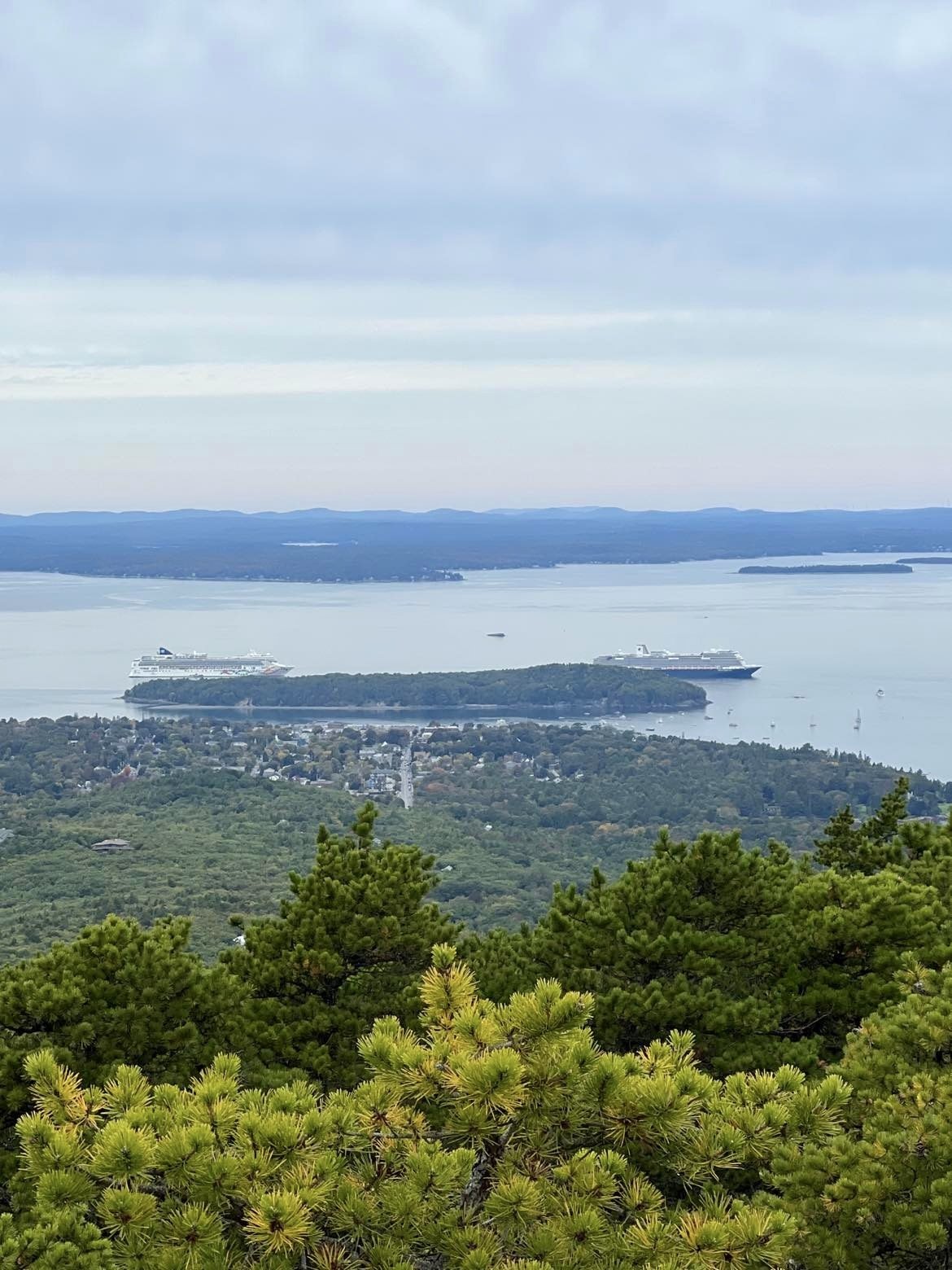

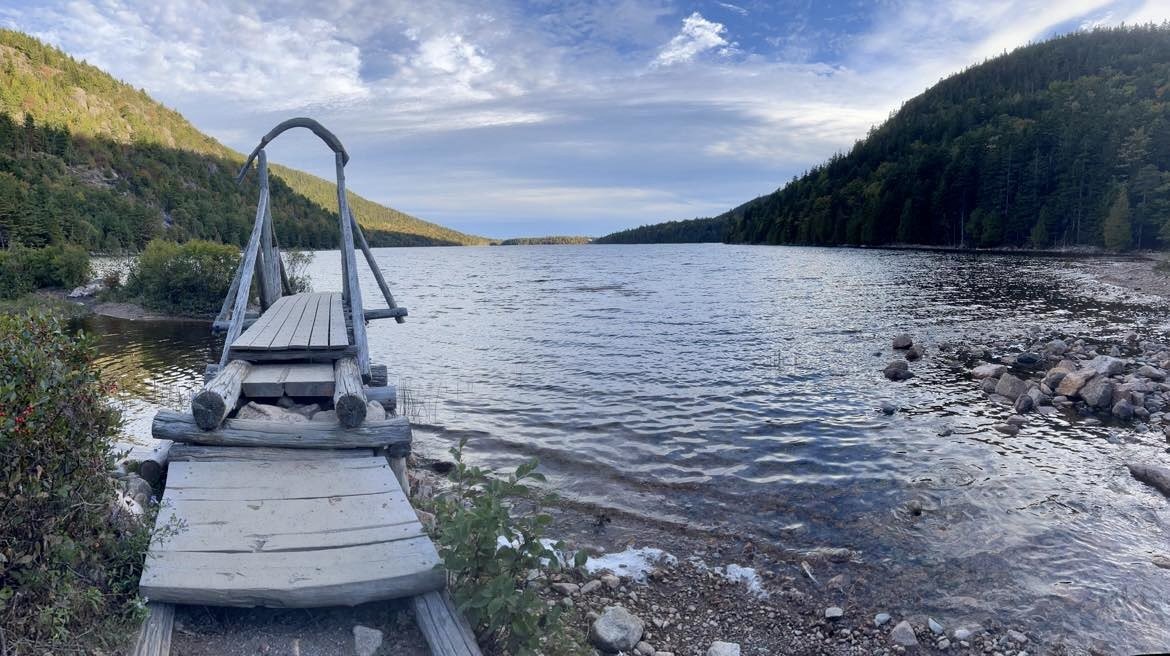

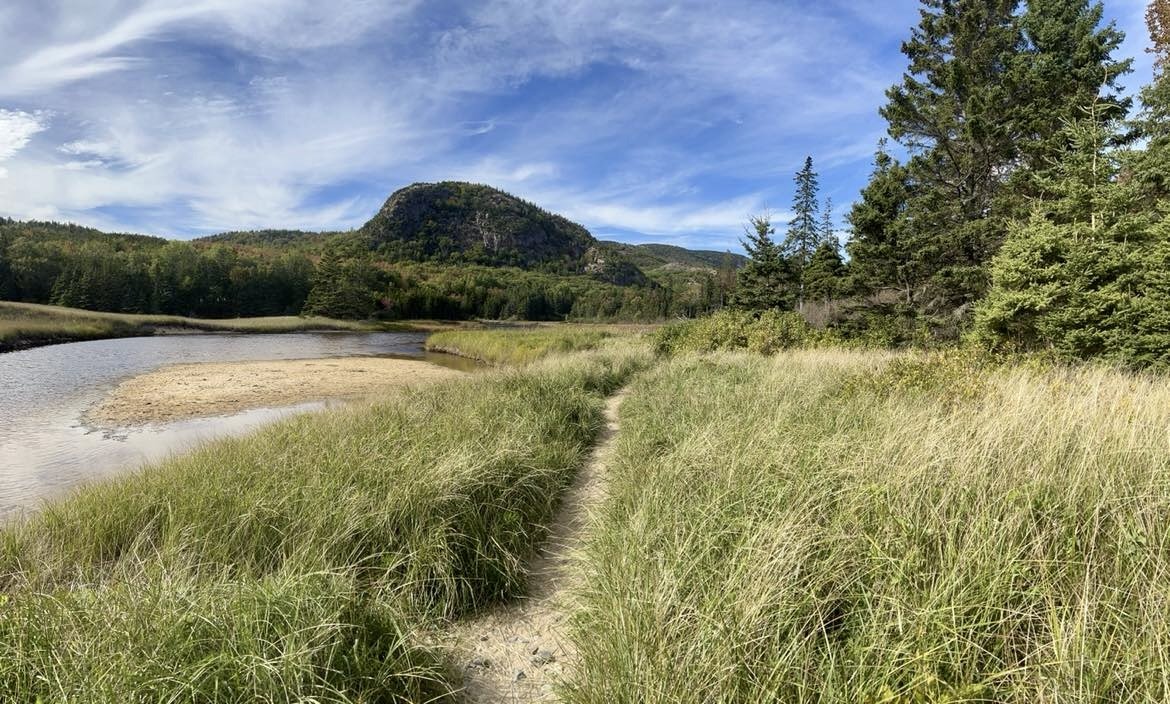
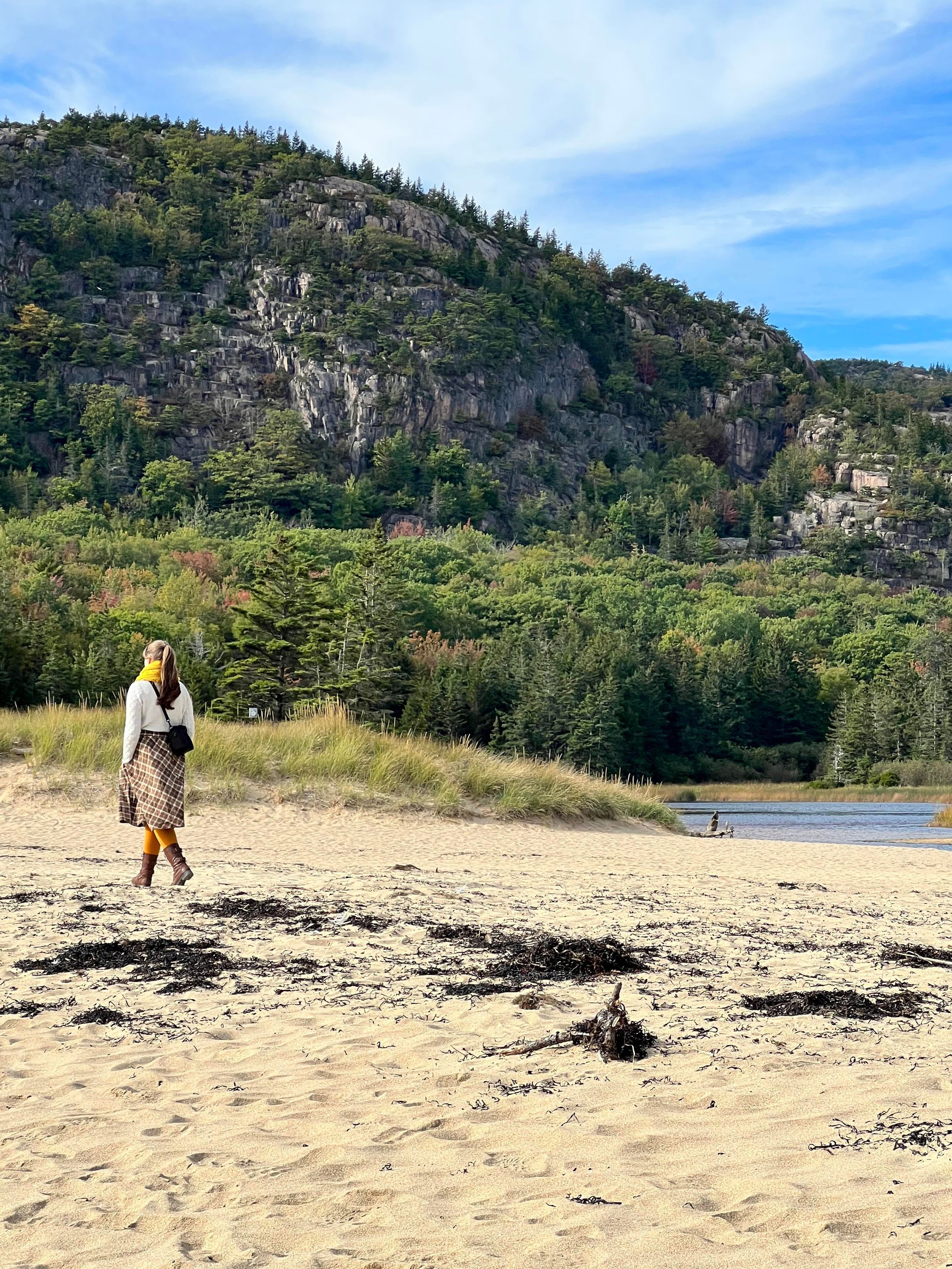
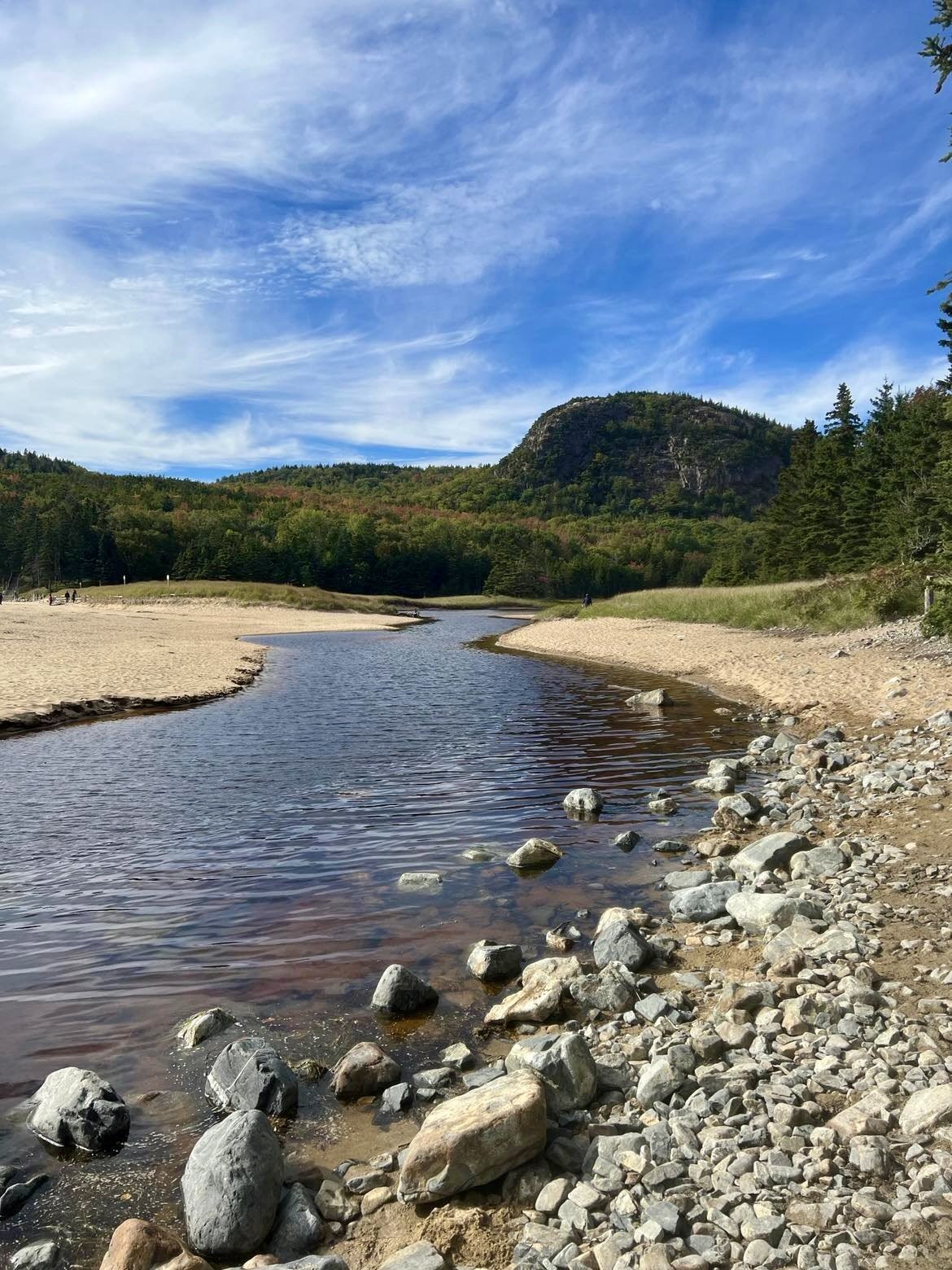


DAY 6 & 7 - WEST QUODDY
Prospect Harbor Lighthouse
Our second to last lighthouse was Prospect Harbor Lighthouse, located on Coast Guard property. We were only able to appreciate this one from far away, and were disappointed to see the recent fire damage that had destroyed the main building. Unfortunately, there’s no news on whether the building will be repaired or demolished.
After visiting the lighthouse we drove to our Airbnb where we had an entire beach area to ourselves. It was so peaceful roaming our little beach every morning to see what the water had washed up. In the evenings we were able to sit by the fire pit and watch as seals swam by the cove.
History
Prospect Harbor Lighthouse was constructed in 1850. The light was deactivated around 1859 because it was deemed unnecessary, and was reactivated in 1870. The main house was damaged in a fire on June 27th of 2022. However, the lighthouse remains an active navigational aid.
Signal: Flashing red 6sec with 2 white sectors
Inland, Bog, Thompson, Coastal Trail and
West Quoddy Head Lighthouse
Day 7 was for taking it easy. The only thing on the agenda was a hike at West Quoddy Head State Park, a beautiful 4.2 mile loop that took us around the entire island. This hike involved wonderfully aromatic pines, stunning little mushrooms, and amazing views. At the end of the hike we walked over to the Quoddy Head Lighthouse, undoubtable one of the more iconic lighthouses in Maine due to its red and white stripes.
History
West Quoddy Head, located in Lubec, is the easternmost point of the United States. A lighthouse was constructed on the site in 1808. However, the iconic red and white striped lighthouse wasn’t constructed until 1858. It still serves as an active navigational aid.
Signal: Flashing 2 white 15sec
At one time, the town of Lubec used to be known as the “sardine capital of the world,” for it was there that America’s sardine industry began. In 1797 the first herrings (adult sardines) were cured by smoke, a preservation process for fish. Lubec, in turn, became the national leader of smoked herring products. Canneries and smokehouses kept cropping up among the shoreline, and by 1950 Maine boasted a whopping 50 sardine canning plants, with 23 of them being in Lubec. However, by the 1960s demand for sardines started diminishing as production decreased and stocks were all but depleted by foreign fleets. Americans’ taste began to change as many began viewing sardines as the “poor-man’s-food.” By 1975 there were only about 15 plants left in Maine, and by 1977 there was only one canning plant left in Lubec. The last sardine cannery in the United States closed its doors in April of 2010, and with it came the end of an era for Maine’s coastal history.
While walking along the shore at our Airbnb one morning, we spotted the remnants of old herring weirs that were set by Native Americans back when herring were plentiful in the area.
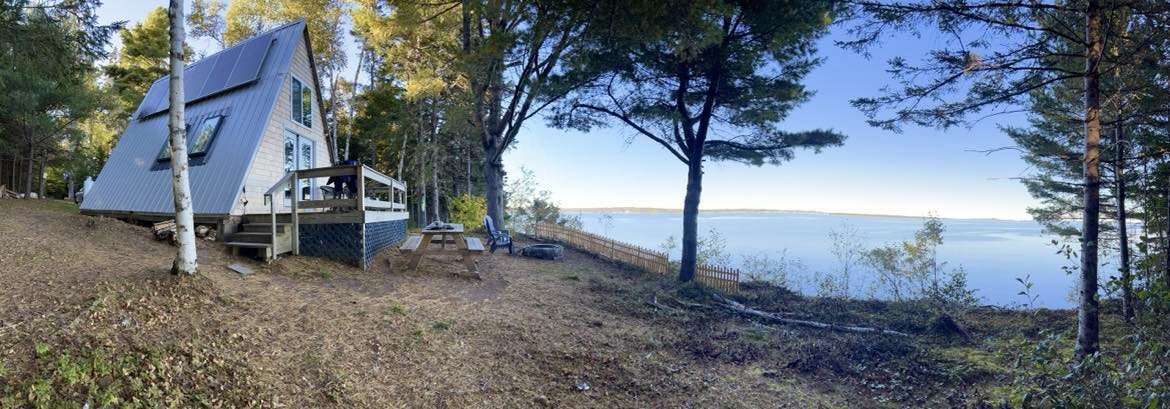
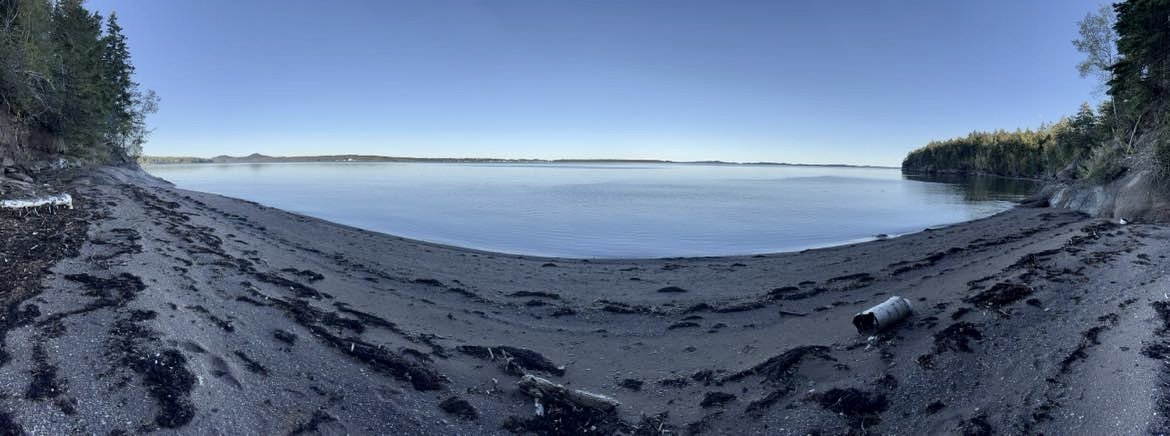
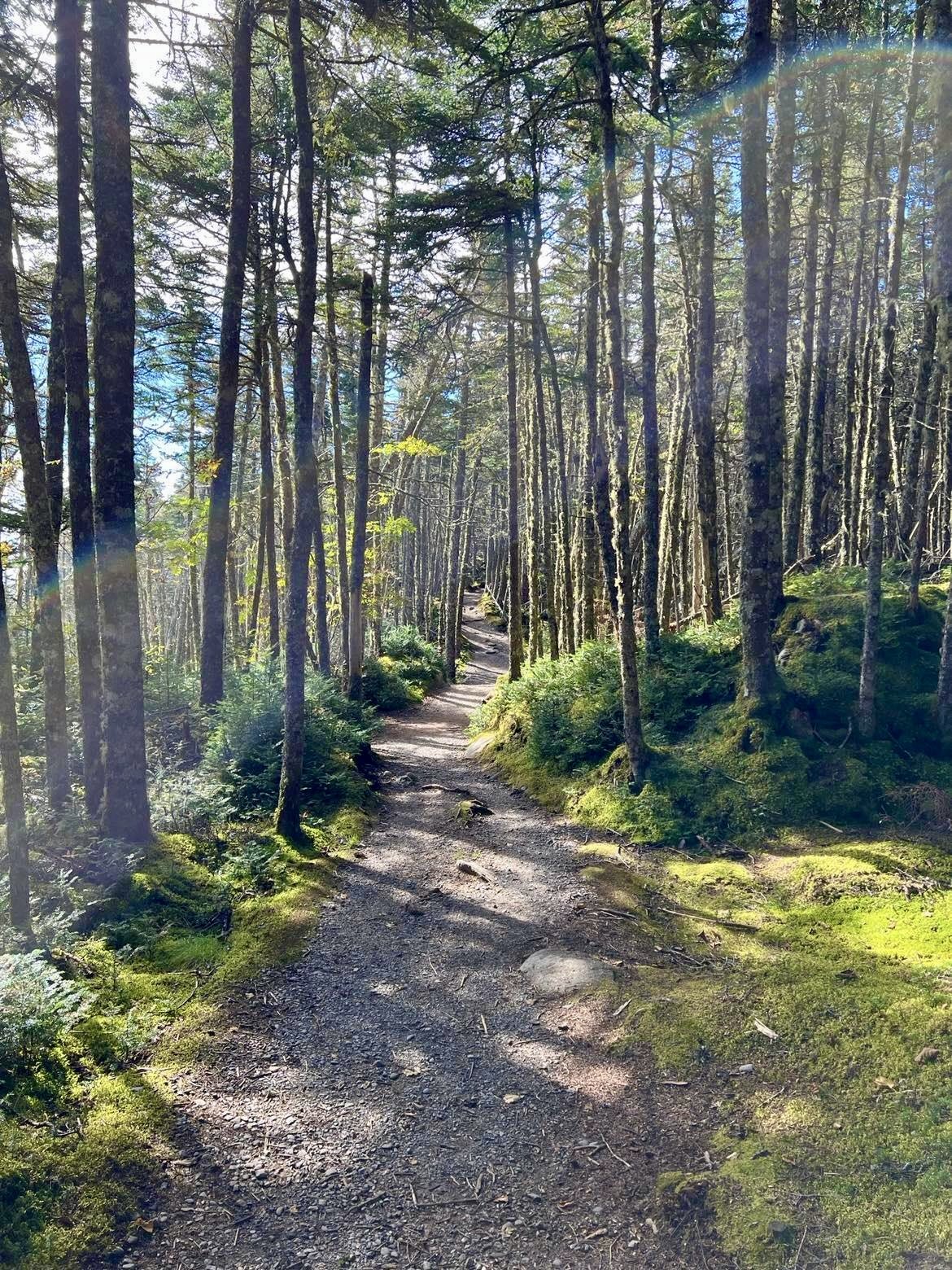
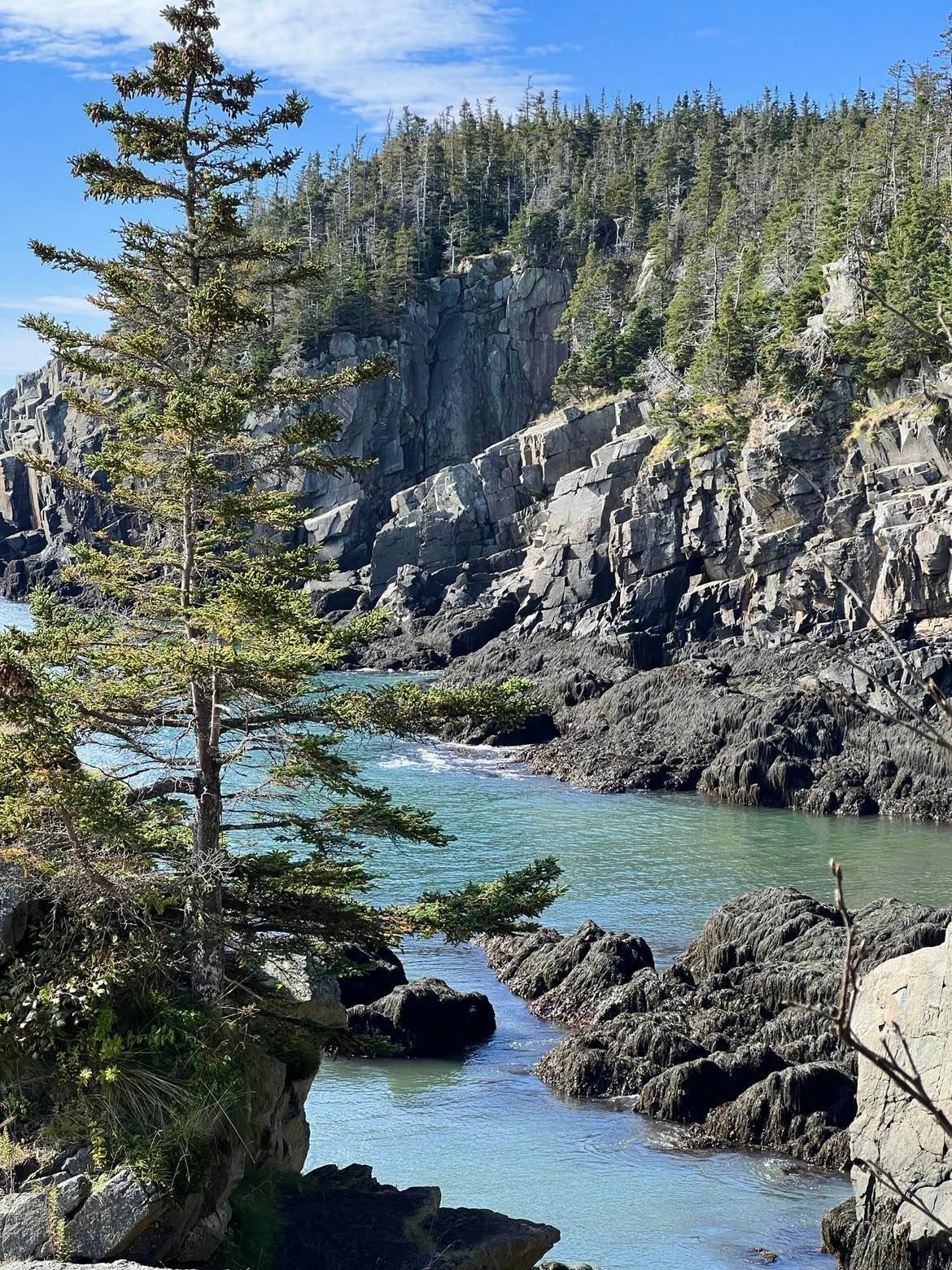
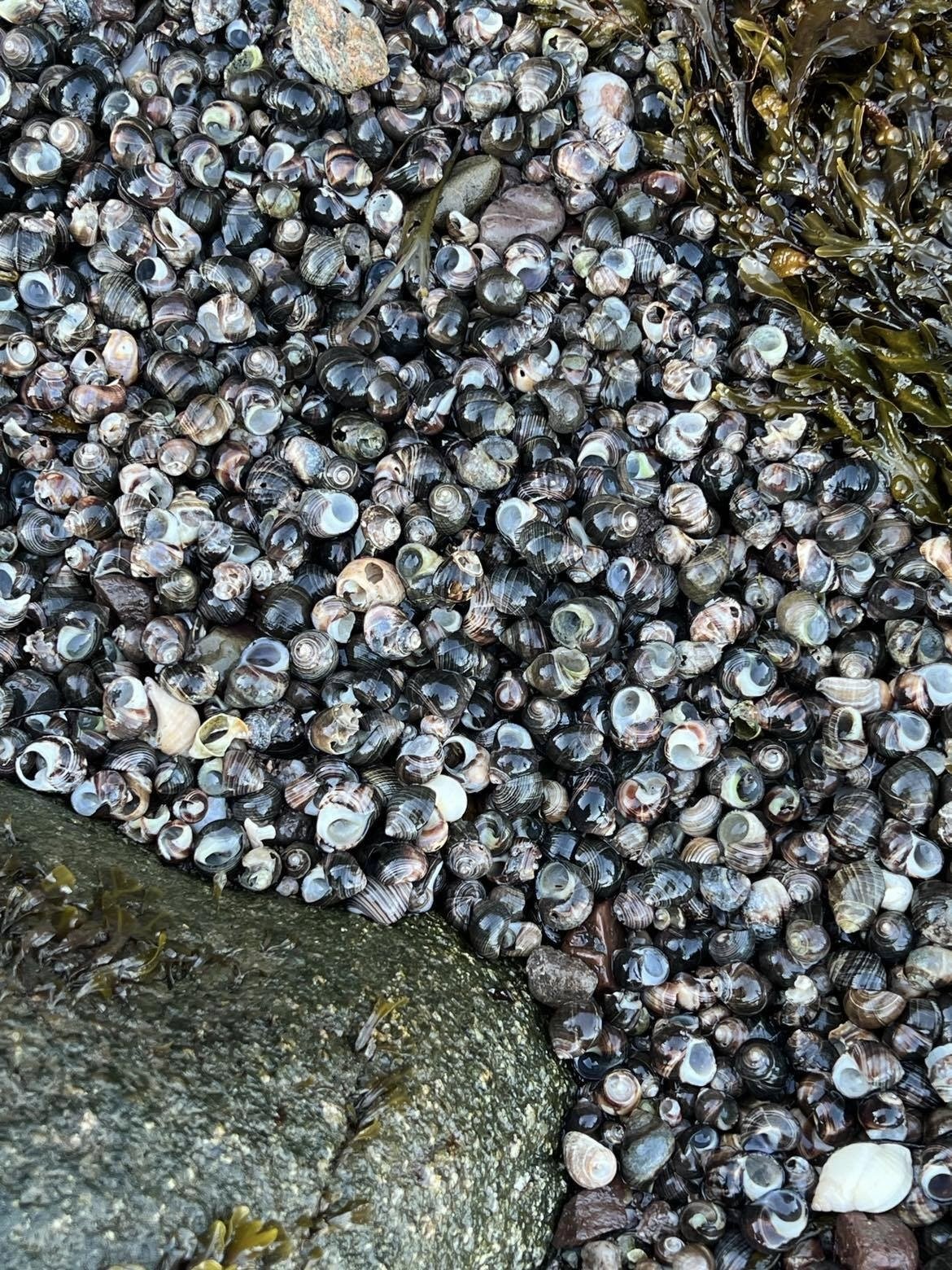
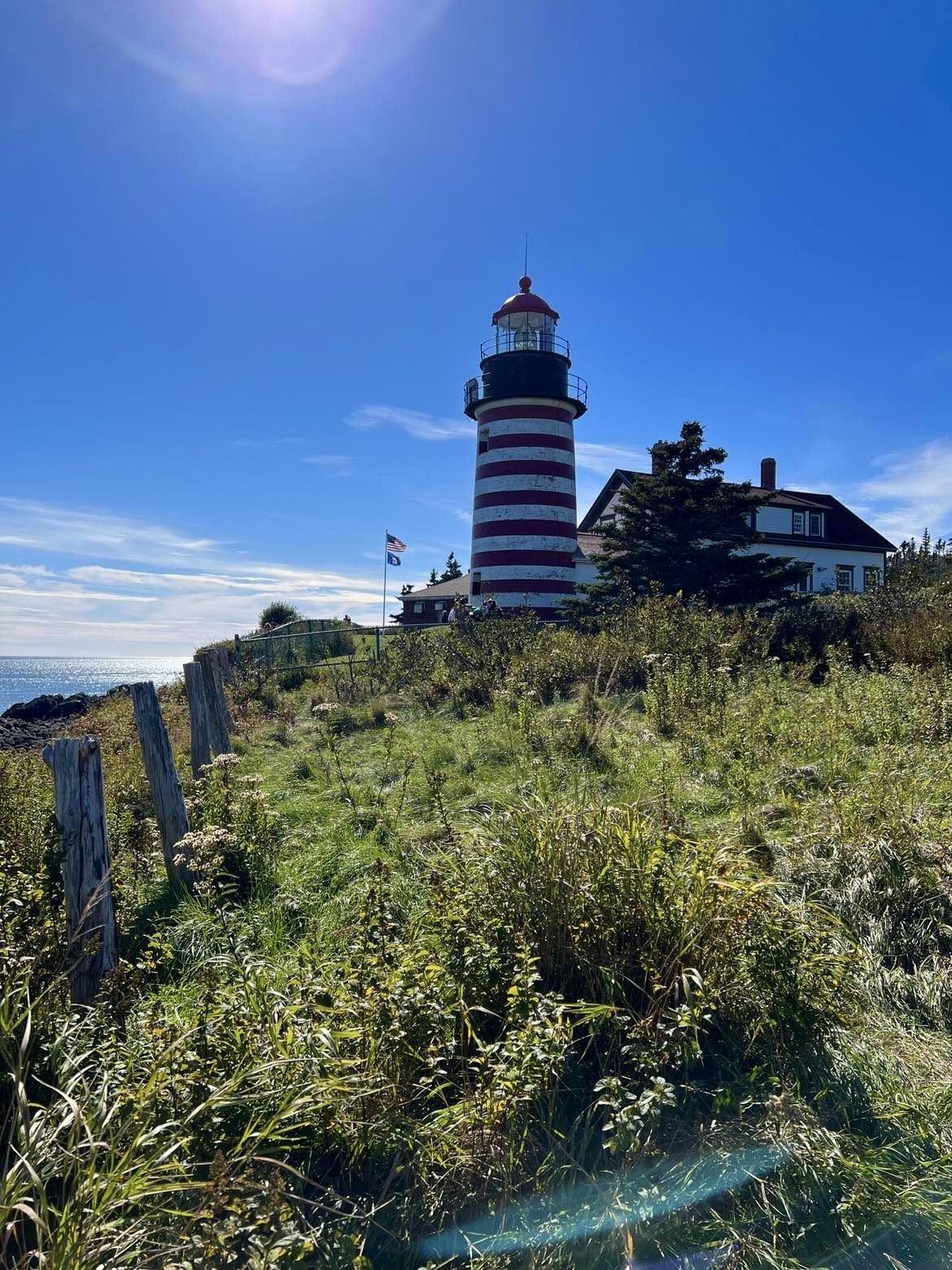
DAY 8 - BANGOR
Cherryfield Blueberry Barrens
In the morning we went down to scan the beach area one more time, collected some shells, then packed up and began driving to our next destination, Bangor. On the way to Bangor we decided to make a pitstop in Cherryville to see the Blueberry Barrens. I knew that the barrens were somewhere in Cherryville, but not exactly where. So, looking for the red fields turned into its own adventure, but we managed to spot several, and even got to taste a few wild blueberries. Seeing all the fields blanketed by fiery red felt almost surreal.
History
Cherryfield was named for the wild cherries that used to line the banks of the river. Nowadays, Cherryville is known as “the blueberry capital of the world,” producing 99% of all wild blueberries in the country, making it the largest wild blueberry producer in the US.
Stephen King
From Cherryville we made our way to Bangor where we immediately set about exploring all the Stephen King related sites. Our first stop was the Stephen King house which now also serves as the Stephen and Tabitha King Foundation.
I have to admit, having read Stephen King books since the 5th grade, I was incredibly excited and fan-girled pretty hard once I saw the spooky gate. There was even a red balloon attached to the gate in reference to IT. I’m unsure whether the balloon was put there by the family, or left by a fan, but either way it made for a perfect picture moment.
We then made our way to the corner of Jackson and Union St, the Thompas Hill Standpipe, and the Bangor Public Library. Fans will know all these locations from the classic IT. All these spots served as inspiration for King’s books, and it was thrilling to be able to walk in his steps. We also visited the Mount Hope Cemetery which inspired Pet Semetary, and is the second oldest cemetery in the United States.

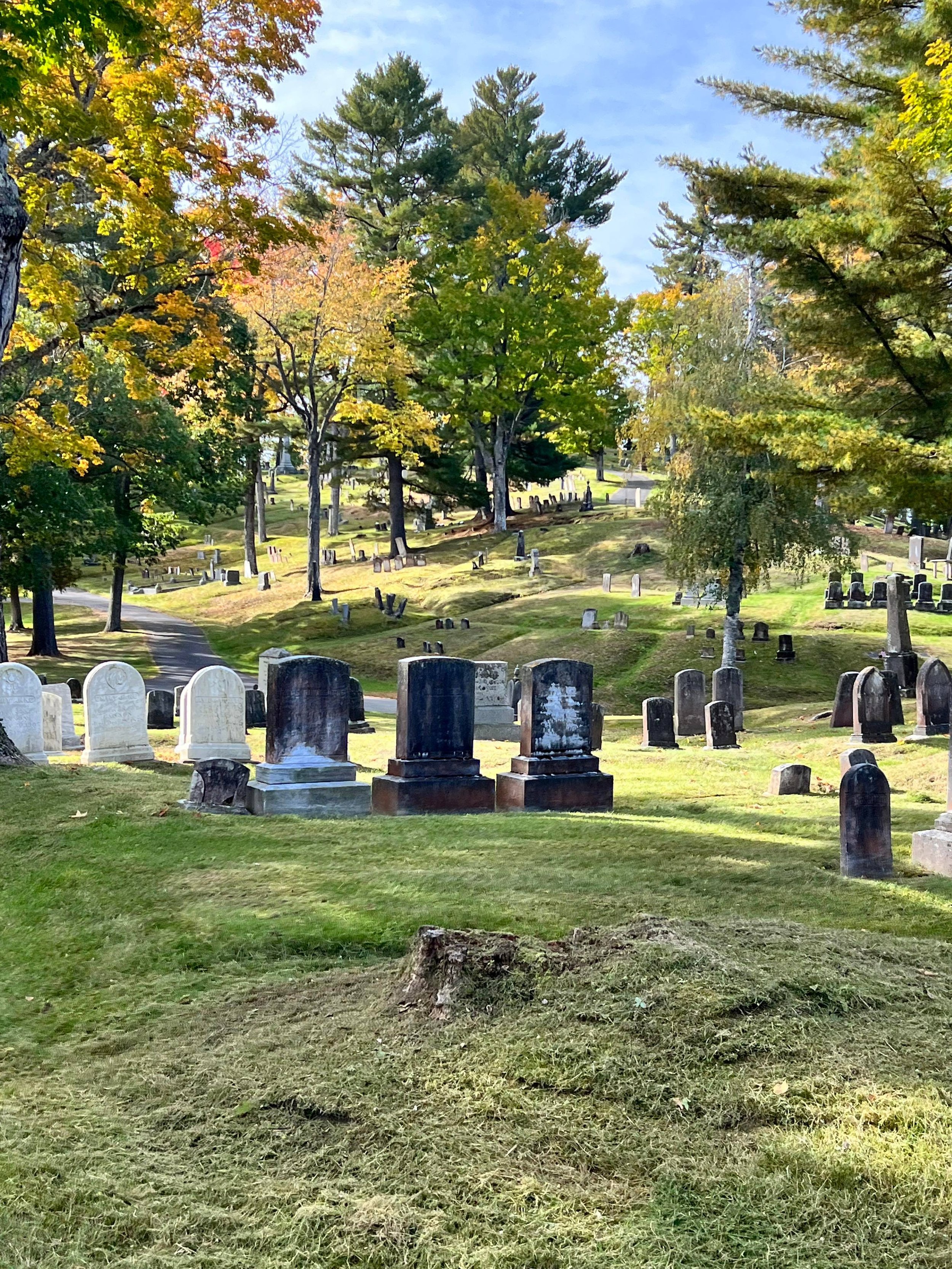
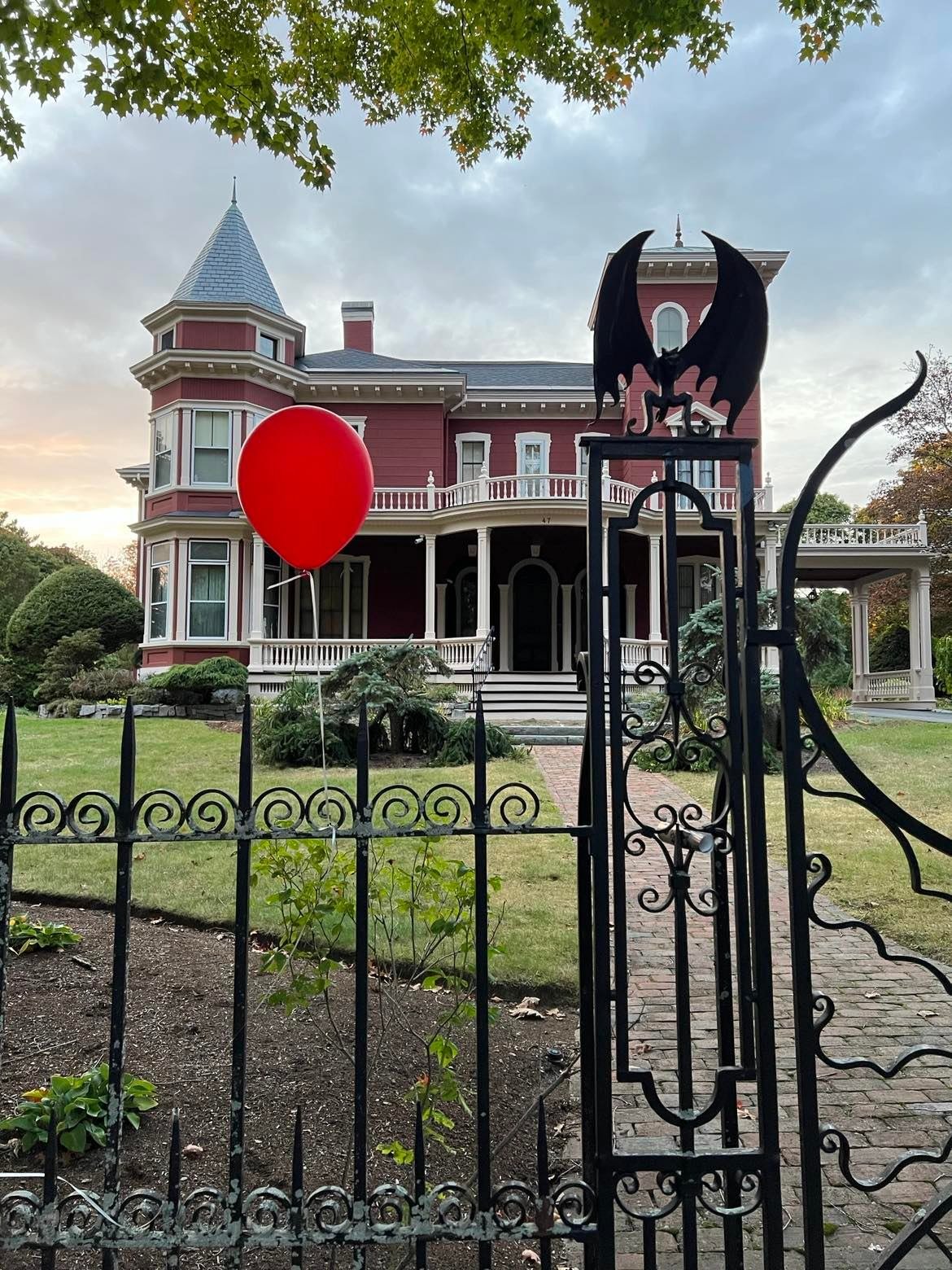
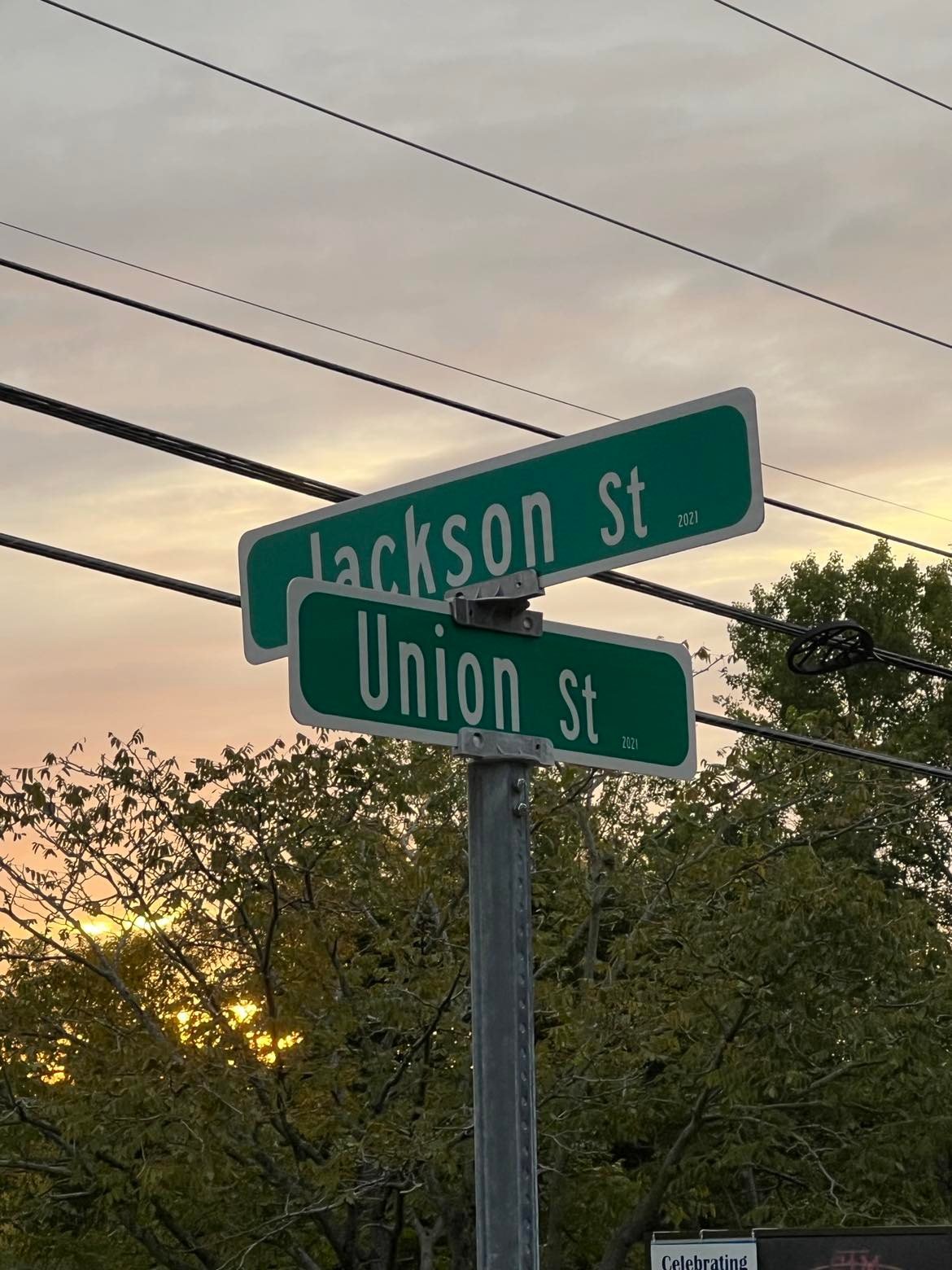
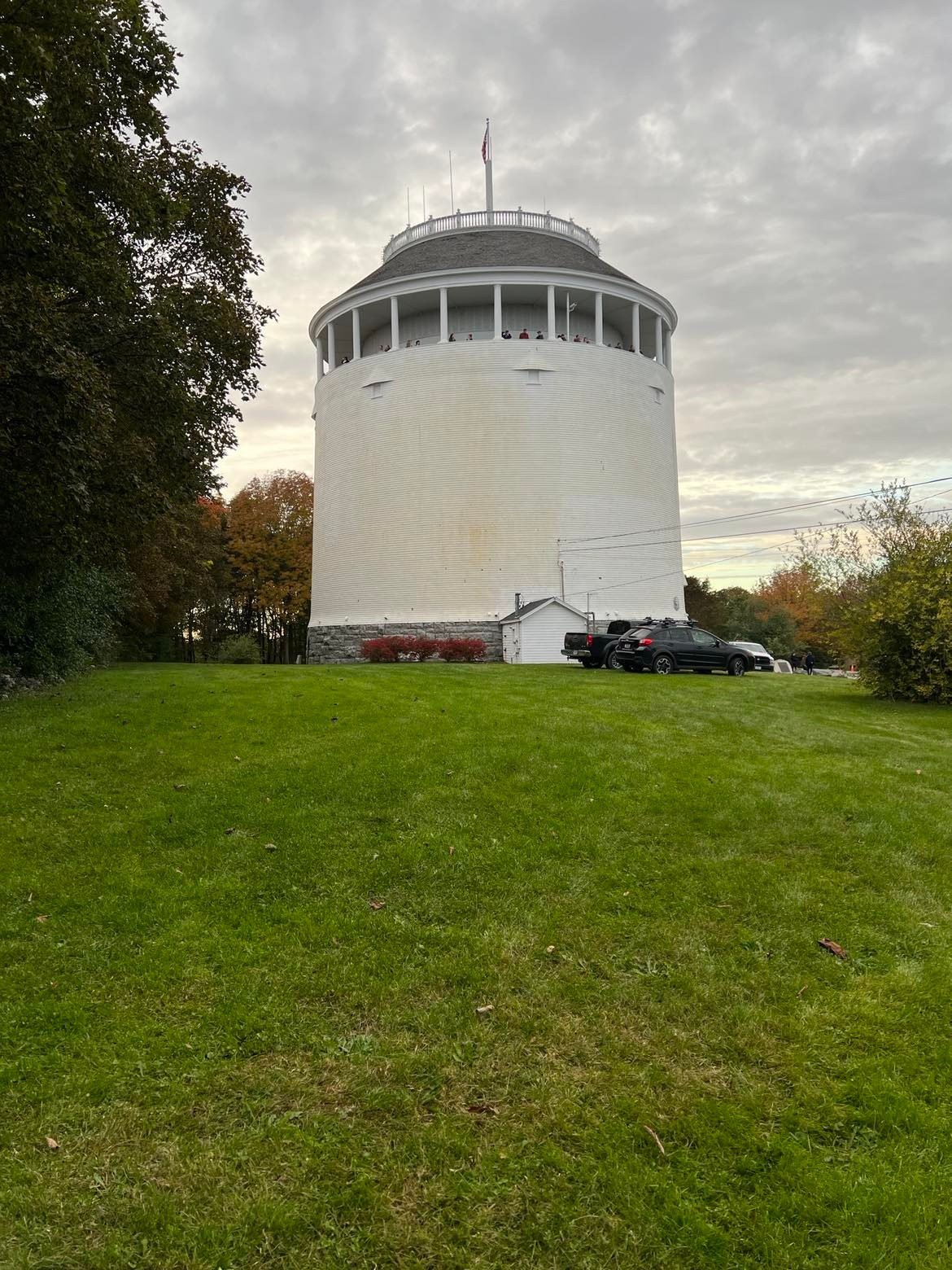
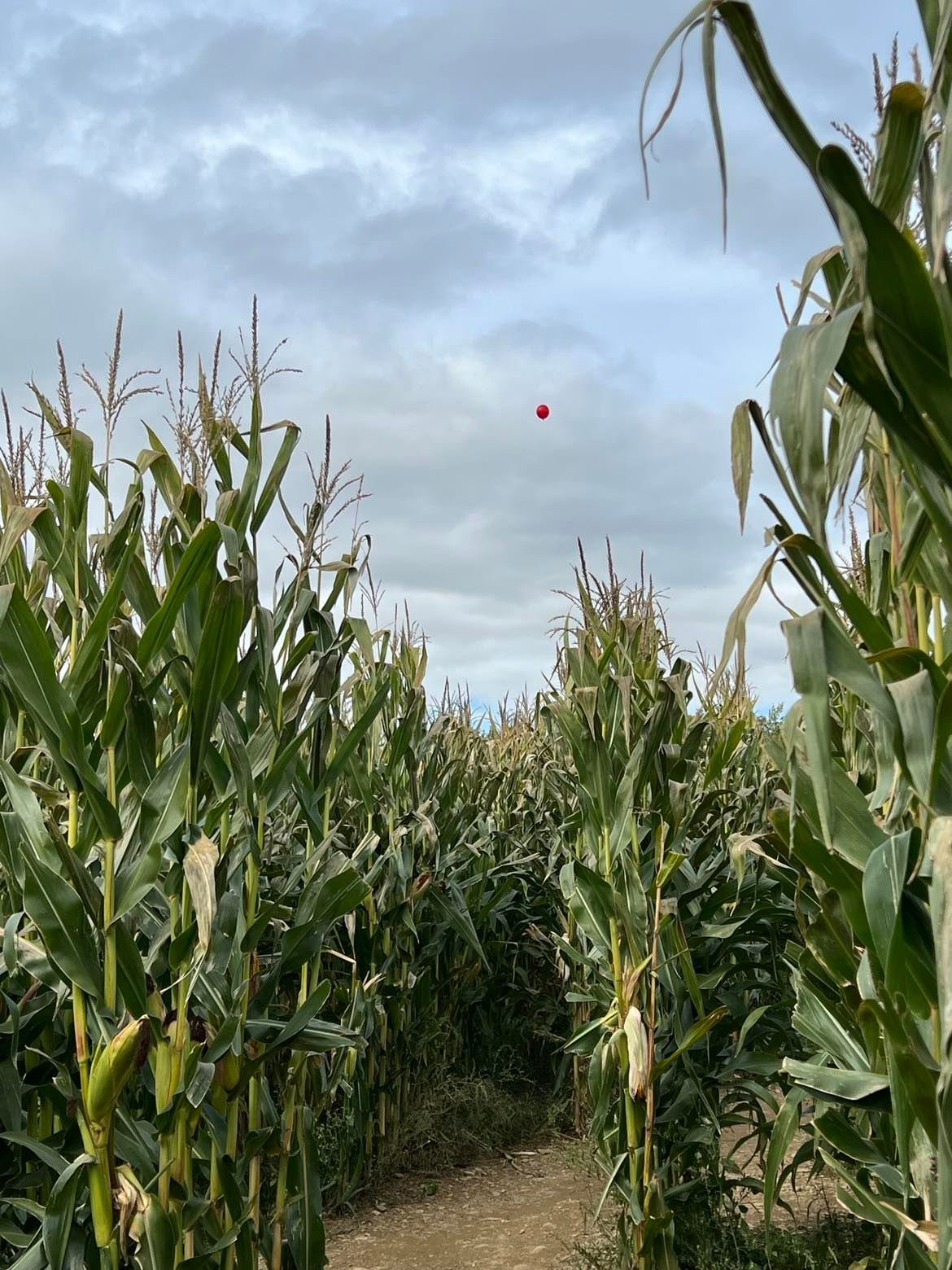
DAY 9 & 10 - BACK TO PORTLAND
Old Port
Our last couple days were spent recuperating in Portland. We spend our days eating good food, which included some of the freshest oysters I’ve ever had, checking out local breweries, and exploring Old Port’s cobblestone streets. We walked around aimlessly popping into art galleries, checking out local shops, and sitting by the water watching folks work on their boats. It was a wonderfully relaxing way to end our journey.
Just a Few More Things…
I’m tirelessly working on new collections/series based on my adventures in Maine. I’m pleased to announce my ornaments will be available Nov. 4th and this year’s theme is Colors of Fall: Maine Edition.
I’ve also begun a new series which I’m calling Snapshots. These pieces are small, polaroid-sized, pen drawings on 5x5in toned paper. They make fun little memories and look very nice hung up together. I plan on keeping a few for myself! This series will be ongoing, but the first batch will be available for the Nov. 4th release as well.
I’m planning several acrylic pieces which will feature lighthouse, cairns, harbors, and boats. A smaller misty forest series is currently in the works, but I don’t have a date for those quite yet.
That’s it for now, but I’ll have more updates later.
Thank you for reading along! I appreciate all the support I receive, and can’t to wait to share new work with you all!
Happy Painting!
